IMPORTANCE OF CODE OF PRACTICE DAM SAFETY REGULATIONS SHEEP WOOL FOR VEGETABLE GROWING


IMPORTANCE OF CODE OF PRACTICE DAM SAFETY REGULATIONS SHEEP WOOL FOR VEGETABLE GROWING


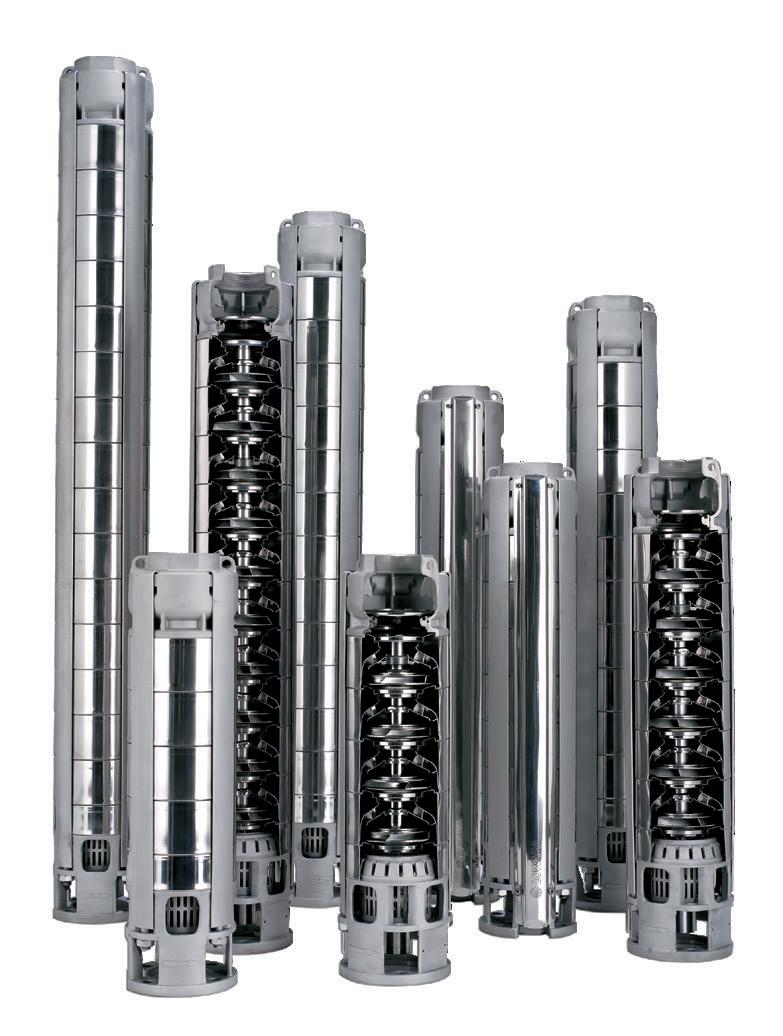
Lowara Z Series
6” 8” 10” & 12” Submersibles
• Stainless steel
• Hard wearing
• Corrosion resistance
• High efficiencies
• Low running costs

Goulds
ISO Series
Single stage end suction pumps
• Cast iron casing / Stainless impellers
• Flexible design
• Highly efficient
• Low maintenance
REGULAR FEATURES
4 FROM THE CHAIR / Keri Johnston
5 FROM THE CHIEF EXECUTIVE / Vanessa Winning
6 OUT & ABOUT
8 VIEW FROM HERE / Shane Jones
11 VIEW FROM THERE / Kelvin Bruce, Victoria, Australia
21 FMG / Fire risks
32 TECHNICAL / A blueprint for freshwater in New Zealand
37 TECHNICAL / Dam Safety Regulations have come into force
40 Seasonal climate outlook
42 DID YOU KNOW? / How we irrigate in NZ
FEATURES
13 MICHELLE SANDS / Ensuring water security the key to the future of NZ’s horticulture sector
17 IRRIGATIONNZ AWARDS / Call for nominations
18 JEREMY BAKER / Muka Tangata: Agricultural education
22 WIL / Connectivity key to biodiversity project
24 FLEECEGROW / Harnessing the growing power of wool
26 RACHEL BROOKING/ The future of freshwater policy
30 IAN MCINDOE / The importance of a code of practice
36 Irrigation Scheduling training
39 NZIPIM proposes new accreditation programme





EDITOR/ADVERTISING Ella Hunt / 027 208 6371 / ehunt@irrigationnz.co.nz DESIGN Rosie Fenton PRINTING Caxton
PUBLISHED BY Irrigation New Zealand / PO Box 8014, Wellington 6143, New Zealand DISTRIBUTION New Zealand Post
COVER PHOTO Falls Dam, Otago, courtesy of Ella Hunt ISSN 22305181
Please email ehunt@irrigationnz.co.nz if the delivery address/information where this magazine has been received is incorrect or needs updated. IrrigationNZ News is published by Irrigation New Zealand Inc (IrrigationNZ) four times a year. The circulation includes all IrrigationNZ members. The opinions expressed in IrrigationNZ News do not necessarily reflect the views of IrrigationNZ. The information contained in this publication is general in nature with every effort being made to ensure its complete accuracy. No responsibility can be accepted for any errors or copyright breach that may occur beyond the control of the editor or IrrigationNZ. Permission must be sought from the Editor prior to reproduction of any material contained in this publication.
www.irrigationnz.co.nz

Keri Johnston Chair IrrigationNZ
Winter has well and truly arrived here in the South Island, with the first snowfall of the year having arrived in mid-May. And while irrigation may be far from your mind at the moment, winter is the best time to get your irrigation system serviced and get repairs and maintenance done so that you are ready to go when the season starts again.
In my last column I mentioned that we were in the process of updating our strategy with the amazing support and facilitation expertise of Molly Kennedy. Our new strategy builds on the solid foundation of our previous one, continuing to strengthen the core of our small, but mighty organisation.
Our desired future for Aotearoa/ New Zealand is to have “water to nourish our communities, environment, and economy”. What we want to achieve as an organisation is:
• having the importance of irrigation understood by all New Zealanders.
• for New Zealand to have a futurefocused approach to freshwater capture, storage, and use.
Our internal focus is on:
• maintaining a healthy organisation.
• a sector demonstrating best practice in freshwater capture, storage, and use.
We will achieve impact through insight and engagement, standards and education, and advocacy.
• We promote best practice and innovative solutions to take us forward together.
• We enhance public understanding, by myth-busting and supporting knowledge of how irrigation is essential for a thriving economy, environment, and for community resilience.
• We support irrigation excellence by setting industry standards and providing education and support to enable achieving them.
• We collaborate with government and other partners on a planned approach, practical regulations, and support for critical infrastructure development.
Our new strategy empowers thriving communities that recognise the value of water in sustaining life, economies, and culture, as well as in protecting our environment, building resilience, and enhancing water security.
It fills my cup to see a whole board and operational team 100% engaged and excited about the work that IrrigationNZ is doing, and with a clear vision of the potential for where IrrigationNZ can develop.
We continue to demonstrate our political value in Wellington. We have had recent successes in changes to the Dam Safety Regulations, and support to put forward projects for the Fast-track Approvals Bill – we put forward four. Our team is respected, and is continually being sought after for practical and reasonable advice.
For the first time in at least six years there is a totally different vibe in Wellington when it comes to irrigation and related issues; water storage in particular. The time that we have spent building cross-party relationships and creating a network of stakeholder supporters has set us up really well for what is shaping up to be a restorative and promising time for the food and fibre sector.
Stay warm out there.
Until next time, Keri

Vanessa Winning Chief Executive IrrigationNZ
“Winter is coming” is a phrase that was made famous a few years ago by the television series Game of Thrones. The series looked at the power struggles between monarchs, the people, and some evil forces. It is a work of fiction, featuring dragons, that many viewers enjoyed. Unfortunately, it feels a little like we are in our own Game of Thrones some weeks in Wellington.
The struggles of business and development interests vs social and environmental interests are playing out with a new Government, and the compromises being made across three governing parties with different ideologies.
But it doesn’t need to be that way. If we can wade through the noise and listen to each other’s concerns we can achieve most of the things we all want. We may not agree on everything, and that is healthy. But we do all agree that if we want a prosperous New Zealand that can support its people and environment, and provide for health and education in a meaningful way, we need to improve our productivity.
And that’s where we come in. With winter coming we have a real opportunity to take another look at our water strategy and at our resilience to climatic changes and adaptability to commodity prices. We must build water capture and storage solutions
that enable investment and adaptive land use in order to take advantage of changing consumer needs.
Fast-track legislation and improvements to the Resource Management Act (RMA) are needed to help this, but we don’t need a battle to get there. We need to work together and make community-wide decisions that benefit whole catchments. Reforming the RMA to be more enabling while protecting the environment requires a delicate balance. This balance was lost through interpretation in the previous Act, and we must ensure it isn’t lost in the opposite direction with the new one.
We have members working daily on improvements, who are achieving outstanding results for their receiving environments, and are focused on continuous improvement. It’s going to take time, but unfortunately, current legal interpretations don’t support the time needed, which is frustrating and puts off good people doing good things. Farmers and growers need certainty and a clear path – not these yo-yoing shifts. Unity across political parties needs to be achieved for long-term investment and change, and we at IrrigationNZ are working toward this.
In Wellington, we are meeting with Ministers and MPs on both sides of the aisle to talk about issues and the solutions
that will benefit all New Zealanders. We know when we have a prosperous regional community the benefits flow. Employment goes up, spending goes up, investment in housing and education goes up, and people move into the rural community to support it. Water in a community brings so much more than growing plants – it brings jobs, people, infrastructure, and income. To again reference Game of Thrones, our White Walkers are not each other – they are the apathy, the helplessness, and the lack of courage to make generational changes that build resilience.
Let’s bring the North and the South (or left and right, in political terms) together and find solutions that benefit the whole country over time. It’s not going to be easy, but nothing good and lasting is ever easy.
Environment Canterbury (ECan) Farm Environment Plan (FEP) auditors attended a training day which was facilitated by Melissa Gillespie and Marcelo Wibmer of ECan.
IrrigationNZ participated, focusing on irrigation performance assessment. Technical information on the Code of Practice was presented by Stephen McNally, and a practical explanation of issues an auditor might encounter in the field was given by Gavin Briggs at his irrigated farm in Ashburton.
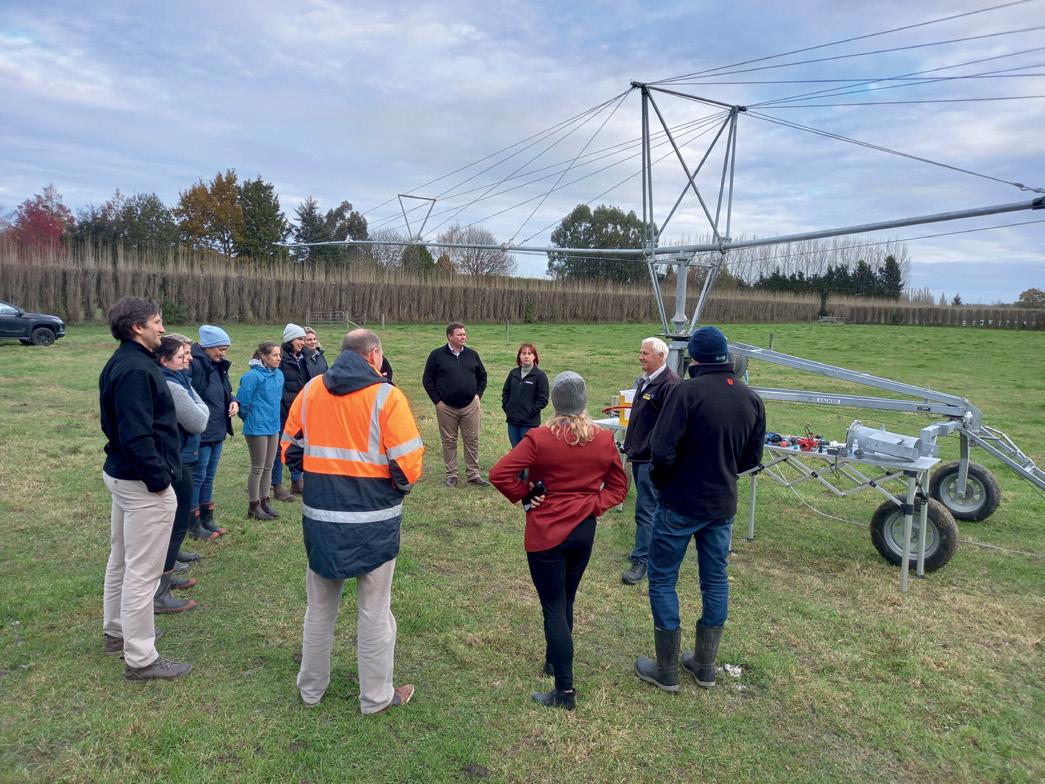

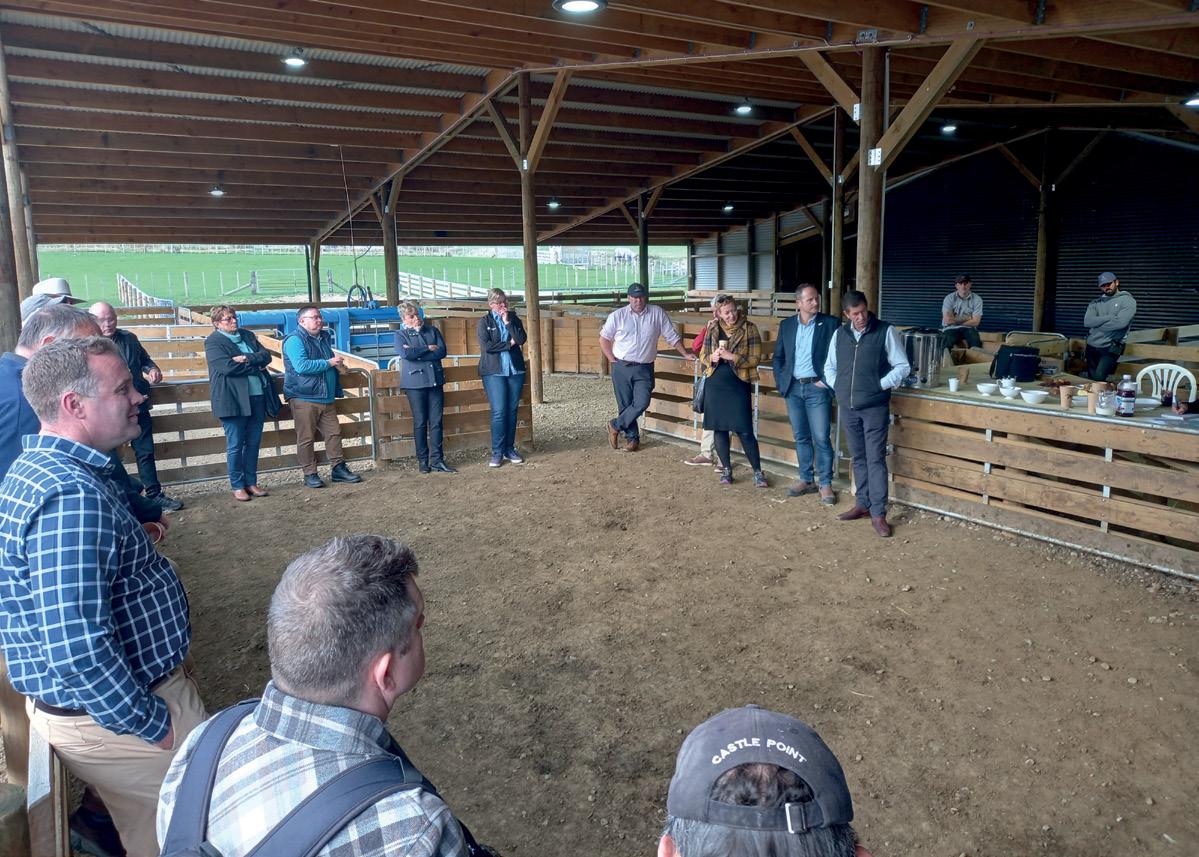
In mid-May, Stephen and Vanessa attended Wairarapa meetings with ACT MPs Andrew Hoggard and Cameron Luxton to explore the potential for land use changes enabled by water.

The New Zealand Certificate in Irrigation System Design’s module two session was held at Lincoln Event Centre from May 7–10. Victor Mthamo was the main tutor, discussing hydraulic design. Several guest speakers covered specialised topics. Tony Atwool (pictured speaking) discussed pipes, Doug Waugh and Trent Spinks from 43South focused on pumps, Ian McIndoe covered wells and submersible pumps, and Simon Francis and Brad Beswick from Nairn Electrical addressed electrical system design.
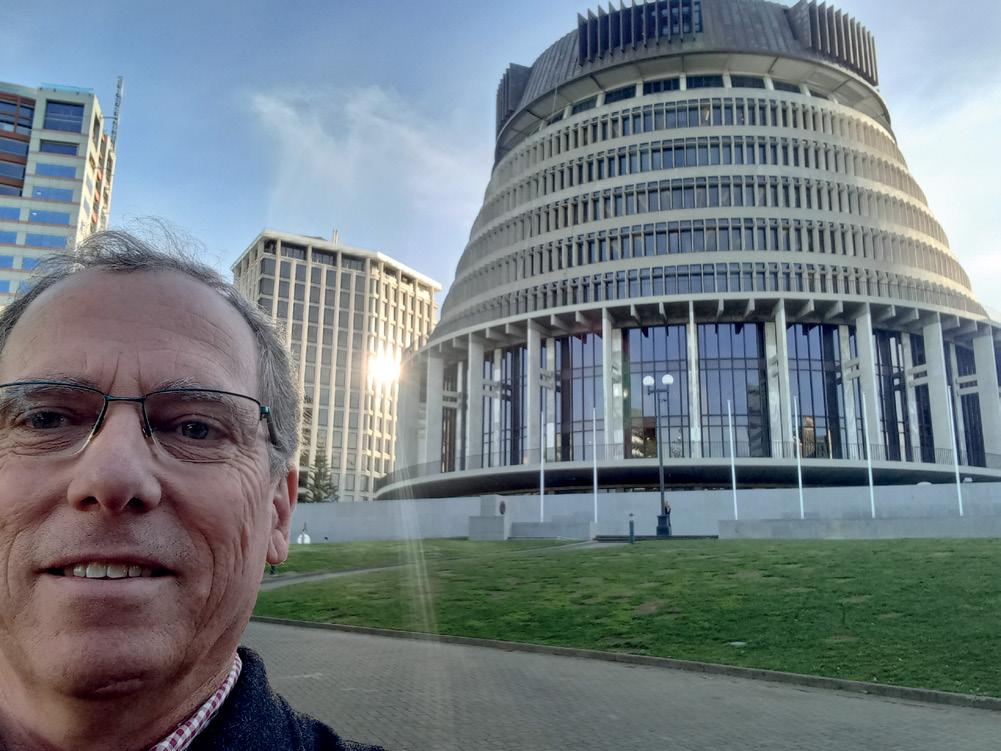
At IrrigationNZ there is always plenty going on! Here’s Stephen snapping a selfie near Parliament on his way to a meeting with the Ministry of Primary Industries. Great selfie game, Stephen!
Vanessa joined Andy Muir from The Muster Show on Hokonui Gold FM to broadcast live from their studio during the recent Mystery Creek Fieldays. They discussed topics such as the Fieldays event, water issues, and the South Island Dairy Event (SIDE).

Refreshments at the IrrigationNZ Awards Evening thanks to the generous sponsorship of Anderson Lloyd
J.R. (Ron) Cocks was a Mid Canterbury farmer who was recognised as a pioneer, visionary, and leader in farming affairs. His greatest legacy was leadership in water issues. The Ron Cocks Memorial Award acknowledges his legacy and encourages others to follow his leadership. Ron Cocks Memorial Award Nominations close 31 July 2024
The Ron Cocks Memorial Award is presented every two years to acknowledge a person who has made a significant contribution to irrigation in New Zealand.
The IrrigationNZ Innovation in Irrigation Award is to celebrate, encourage, and promote innovation in irrigation, and the positive actions made possible in our communities thanks to irrigation. It recognises people doing extraordinary things on farms, in schemes, in business, or supporting service industries. Entries are reviewed by considering the potential for the new knowledge to have a positive impact on irrigation through technological development or in a manner that will enhance the economic, social, cultural, or environmental aspects of irrigation. Innovation in Irrigation Award $2,500 cash prize – Entries close 31 July 2024
The Ron Cocks Memorial Award and Innovation in Irrigation Awards will be presented at the IrrigationNZ Awards Evening held 6 November 2024 in Wellington. For further information and for nomination and entry forms, visit www.irrigationnz.co.nz


Shane Jones
Minister for Oceans and Fisheries, Minister for Regional Development, Minister for Resources, Associate Minister of Finance, and Associate Minister for Energy
Water storage is a crucial part of our nationwide infrastructure investment. Its value is seen more in regional and rural New Zealand which cannot rely on urban infrastructure and city planning. Strong water management systems generate confidence in rural New Zealand, which unlike urban areas which are secured by the pipes of city planning, is often at the mercy of the god of wind and rain. As the Minister for Regional Development, I, along with this Government, am delivering projects to a host of regions which will encourage confidence and growth in the face of an increasingly challenging natural environment.
We need to focus on boosting our country’s regional resilience by investing in water storage projects. There is a saying, “there are four things needed to sustain life: air, food, water, and shelter”. As the champion for the regions, I believe investing in water infrastructure is one of the keys to safeguarding and growing the economy of rural New Zealand by ensuring water resources are readily available.
National investment of this category provides reliability to local councils and their constituents. Guaranteeing a reliable source of water is a key driver for small communities, enabling job growth in the regions by providing confidence to the horticulture
sector. Water storage also unlocks high value land use which results in greater returns for landowners.
Water storage is a response to the uncertainty of nature. Climate change is having an undeniable effect on weather patterns. I have often been criticised as being slow-moving on climate matters. This is simply not true. I am an economic realist. There is no doubt the weather is becoming more volatile. Our economy is small, and we must focus on coping with changing weather. Some would have us believe mitigation has a higher purpose than adaptation. My focus is working on building regional resilience.
The previous Government’s attempts to secure water storage were bogged down by bureaucratic piety, giving focus to esoteric policy dressed up as good intentions.
Under my Regional Development role, I am proud to declare $154.74 million has been committed to support 12 water infrastructure projects around the country, which is a step in the right direction for regional resilience. Five of these projects are now complete. Of the 12 projects, eight are related to water storage infrastructure and the remaining four are closely related to irrigation, though they may also have water storage elements. These water storage projects include reservoirs, dams,
pipelines, and other reticulation works.
In Northland, the Matawii, Otawere, and Kaipara reservoirs are healthy examples of water projects. The construction of Matawii water storage reservoir is a project supported by the Crown. When full, the Matawii reservoir retains 750,000 cubic metres of water, which is equivalent to 3,200 Olympicsized swimming pools, and provides water security for Kaikohe town centre. Otawere reservoir development is progressing after funding up to $19 million was provided by the Crown.
At the end of March 2024, work on an irrigation scheme was completed in Raukokore / Waihau Bay in the Eastern Bay of Plenty. An investment of $11.5 million from the Provincial Growth Fund will help develop 200–300ha of high value horticulture land, with the capacity to grow to 900ha over time. This scheme supplies water to both the Wai o Kaha gold kiwifruit orchard and Waihau Bay green kiwifruit orchard.
The consents process for Matawii and Otawere were fast-tracked during the COVID-19 recovery process. Together these water storage schemes will store an estimated five million cubic metres in the mid North.
One of the biggest challenges to such projects is the Resource Management Act (RMA). Bureaucratic red tape has halted the progress

Bureaucratic red tape has halted the progress of genuine projects that have wide-scale benefits. The cumbersome legal framework can undermine progress for years.
of genuine projects that have wide-scale benefits. The cumbersome legal framework can undermine progress for years.
Alongside Ministers Brown and Bishop, we have developed a fast-tracking process to accelerate projects of national significance. This Bill is the Fast-Track Approvals Act. Like the COVID-19 fast-track process, this will bypass red tape and provide opportunity for projects to quickly pass through the
consents process, which could otherwise take years. We are listening to the interests of communities, including the rural sector, and are determined to drive solutions through as soon as is practical.
We look forward to the outcomes from the select committee process later in the year.
Under the current fiscal climate we need a collaborative approach to investment. If we are going to continue to build water storage projects within the regions we will need to work with regional councils and the private sector. The Government cannot foot the bill alone.
I believe in “can do” politics and working toward practical outcomes for regional and rural New Zealand. Water storage is a vital piece of infrastructure necessary to grow New Zealand. As long as I am in politics I will champion common sense, balance, and
a practical approach to making our nation more resilient.
Shane Jones is the Minister for Oceans and Fisheries, Minister for Regional Development, Minister for Resources, Associate Minister of Finance, and Associate Minister for Energy.
Mr Jones entered Parliament in 2005 with the Labour Party and joined New Zealand First as an MP in 2017.
Mr Jones was educated at St Stephen’s School and has studied at universities in Wellington and Western Australia, and at Harvard. He has held business and public sector leadership roles such as Chairman of Sealord, our country’s first Pacific Economic Ambassador, Member of Parliament, and a Minister in Government.

Kelvin Bruce Retired Dairy Farmer and Chairperson of Shepparton Irrigation
Region People Planning and Integration Committee
Northern Victoria, Australia
My involvement with irrigation began in 1996 when we moved to Australia to follow our dream of owning a dairy farm.
We had received advice that when dairy farming in Australia, one should go to an area with secure water.
We settled on a share-farming opportunity near Shepparton in the Goulburn Valley. The Shepparton region has an established irrigation network supplied with water from Lake Eildon, about 120km south of Shepparton.
It was a huge adjustment coming from the West Coast of the South Island, New Zealand – with mountains of 2300m at our back door and annual rainfall of up to 6 metres – to a country flat as far as the eye can see with an average annual rainfall of 600mm. Growing and managing pasture was our trade, and being able to manage moisture, fertiliser, and rotation, we thought we had landed in farmers paradise: they called it the Land of Milk and Money!
Home-grown feed is a key profit-driver, and providing this became challenging when it stopped raining in the 2000s and we were faced with something many had never experienced; drought and a reduced water allocation. The situation deteriorated, with urban water coming under threat.
Major Victorian cities including Melbourne, Bendigo, and Ballarat were forecast to run out of water if the drying conditions and population growth continued. The environment also suffered with so little water
making its way downstream to the creeks and wetlands. Our seemingly unlimited agricultural resource became a target for urban security and environmental protection. But there was plenty of opportunity to save water in an irrigation system where channels, channel-controls, and outlets were up to 80 years old and falling apart in places. I’ve always felt that because water is such an important part of our farming operation, there was a need for an improved relationship with the water authority, Goulburn Murray Water (GMW), and its staff.
I had the opportunity to become a member of the Water Services Committee (WSC), which is an opportunity for waterusers to engage with GMW on financial and operational matters. It was good to get behind closed doors and gain an understanding of how the organisation worked and discuss the issues that farmers were facing. The millennial drought highlighted to government the need to calm the political tension around water security for urban and environmental needs. A plan to modernise our irrigation system was made which was designed to share the water savings. $1 billion from the Victorian Government and $1 billion from the Federal Government were secured to modernise the GMW system. GMW covers 68,000 square km (6.8 million hectares) and operates about 6,000km of channels, so this was a major project for the state.
As part of my role on the WSC, I opted to join the Modernisation Working Group
for our area, with the goal of finding effective ways to save water within the system. This was an interesting experience at a unique moment in time. One of the first steps was to change our meters, which had been giving users an average of seven percent too much water. That was a hard story to sell to farmers, who at the time were screaming out for more water. Expensive, remotely operated outlets that were going to cost more to maintain were not popular. Tough decisions had to be made, including shutting down or lining and piping old leaking channels, and concentrating the irrigation footprint by only irrigating better soils closer to the major channels. Bring in the experts: consultants, planners, and some more consultants.
Our modernisation working group was disbanded and sadly we now have what we call the Swiss Cheese effect – pockets of irrigation spread around and water being moved great distances.
We have an amazing water delivery system, which is gravity-fed with Total Channel Control, automated farm outlets that measure and control flow rates –expensive to connect, but dependable and effective. The modernised system did save water. It measured and controlled water more efficiently, and the lined and piped channels stopped water theft, seepage, and evaporation.
During this period of major and sustained droughts, the Federal Government, seeking more water for the environment, offered big money to buy permanent water allocations





from struggling farmers, many of whom grasped an opportunity to relieve crippling debt. The advice we were given was to sell water, relieve debt, and then buy back water from the temporary market. However, many found that trying to operate within an unpredictable water market was just too hard to manage. It meant other buyers invested in the water market after seeing an opportunity to set up large horticultural operations downstream that could pump water from the river with no water delivery infrastructure fees.
This opened the water market to overseas investors, offering lucrative returns with minimal risk, but it was hugely detrimental to Australian agriculture. In my view, not enough consideration was given to the social, economic, and environmental impacts of water leaving our region.
I have been privileged to be involved in the Shepparton Irrigation Region Land and Water Management Plan (SIRLWMP). Ten years ago, I was invited to attend community workshops aimed at forming a plan to help future-proof our region. We heard perspectives from different industries, agencies, organisations, and interest groups and mashed them all together to settle on a common goal for our region. The SIRLWMP has been in place in this region for 30 years and manages issues such as salinity (from rising water tables), not enough water to maintain river health, biodiversity, and farming practices. It has helped attract government funding for identified growth opportunities in agriculture and horticulture. Additionally, it has worked hard to predict and mitigate threats.
Looking forward, the latest plan – which is currently in draft form – has again identified the issues which are critical to the success of our region. I think the resilience and flexibility of our community will hold us in good stead as we meet challenges and opportunities in the future. We lead the nation in sustainable irrigation by bringing together many stakeholders and finding common ground to form direction, strategy, and a vision for the future. It has been a privilege to be involved in bringing this plan together. This region has been good to us and I am glad to be able to put a little back in.

Michelle Sands Manager of Strategy and Policy Horticulture New Zealand (HortNZ)
New Zealand’s horticulture sector plays an important role in our country’s economy and is critical for the nation’s food security. While most of the fruit grown in New Zealand is exported to markets worldwide, most vegetables produced here are for domestic consumption.
The value of the industry has grown to almost $7 billion, and the sector, along with the Government, has ambitious plans to double the farmgate value of produce by 2035 in ways that improve prosperity and protect our environment.
However, to achieve this goal and enable investment in and expansion of growing areas, growers need confidence in their water supply.
Access to water, the ability to store water, and the right policy settings are crucial. These measures will ensure the stability of the sector, enhance market competitiveness, enable growers to manage seasonal fluctuations in water, and meet market demand throughout the year.
In the face of climate variability and extreme weather events, water storage is essential to mitigating risks and enhancing resilience for horticultural producers. Currently, there are several barriers to achieving this.
HortNZ is advocating strongly for fresh approaches and policy settings that enable growers, farmers, and communities to share water and the costs of storing water more efficiently.
Most horticulture in New Zealand is irrigated. However, horticulture is not a
high-water-demand industry. It generally uses less water than irrigated pasture, and overirrigating is not advantageous for producing the best produce. Growers tend to use carefully targeted methods such as drip or trickle irrigation, which are very efficient.
For quality, productivity, and market competitiveness, it is crucial for growers to have access to water when they need it and at the right times. For example, let’s use kiwifruit, which is the largest sector in New Zealand’s horticulture industry. To achieve optimum fruit size and the resulting premium, growers need to irrigate the root at a specific point in the growth cycle.
Given that much of the perennial crop harvest occurs towards the end of summer, the highest need for horticulture water is generally when surface water flows may be lower. A major advantage of storing water is having the option of irrigation when needed.
HortNZ has advocated, with some success, for crop survival water to be included in regional plans, allowing growers to take small amounts of water during low flows to keep crops alive.
However, with the changing climate, extended droughts are predicted, increasing tension within irrigation.
Environmental limits are designed to support freshwater health outcomes, so we must find ways to extract and share water within those environmental limits. In many catchments in New Zealand the amount of water that can be abstracted from surface
water and groundwater and used immediately for irrigation, industrial, and municipal uses has been reached.
In many catchments, councils are not issuing consents for increased water abstraction from sources unless that water abstraction occurs in higher flows and is stored to be used later.
The highly productive land used for horticulture is often close to towns, and we are seeing increasing urban growth, with municipalities wanting to abstract water traditionally used for horticulture for drinking, sanitation, and industrial uses.
If more water is taken to support urban growth, without increased storage, this risks transferring water away from highly productive land.
While we understand the need for drinking water and sanitation, other municipal uses of water should not be prioritised over primary production.
HortNZ seeks restrictions on the ability of water to be transferred away from highly productive land, and policies that encourage collaboration on water storage that serve both rural and urban activities.
Horticulture needs certainty of water supply to thrive, expand, meet the Government’s goals for increased productivity and export volumes, and feed a growing population.This requires finding ways of using and sharing the existing allocation of water more efficiently.
HortNZ is advocating for better regula-
tory methods to support sharing water and efficient use, but efficient use alone will not meet the demand for horticultural expansion, population growth, or support augmentation to reduce the effects of climate change.
To address these challenges we need to abstract more water within environmental limits, and the only way to achieve this is by
enabling significantly more water storage.
There is a limit to the amount of groundwater that can be abstracted without impacting the ecosystem or the long-term sustainability of groundwater sources.
However, surface water is abundant at certain times of the year. Today, we have the hydrological tools and understanding of flow regimes to design processes that minimise
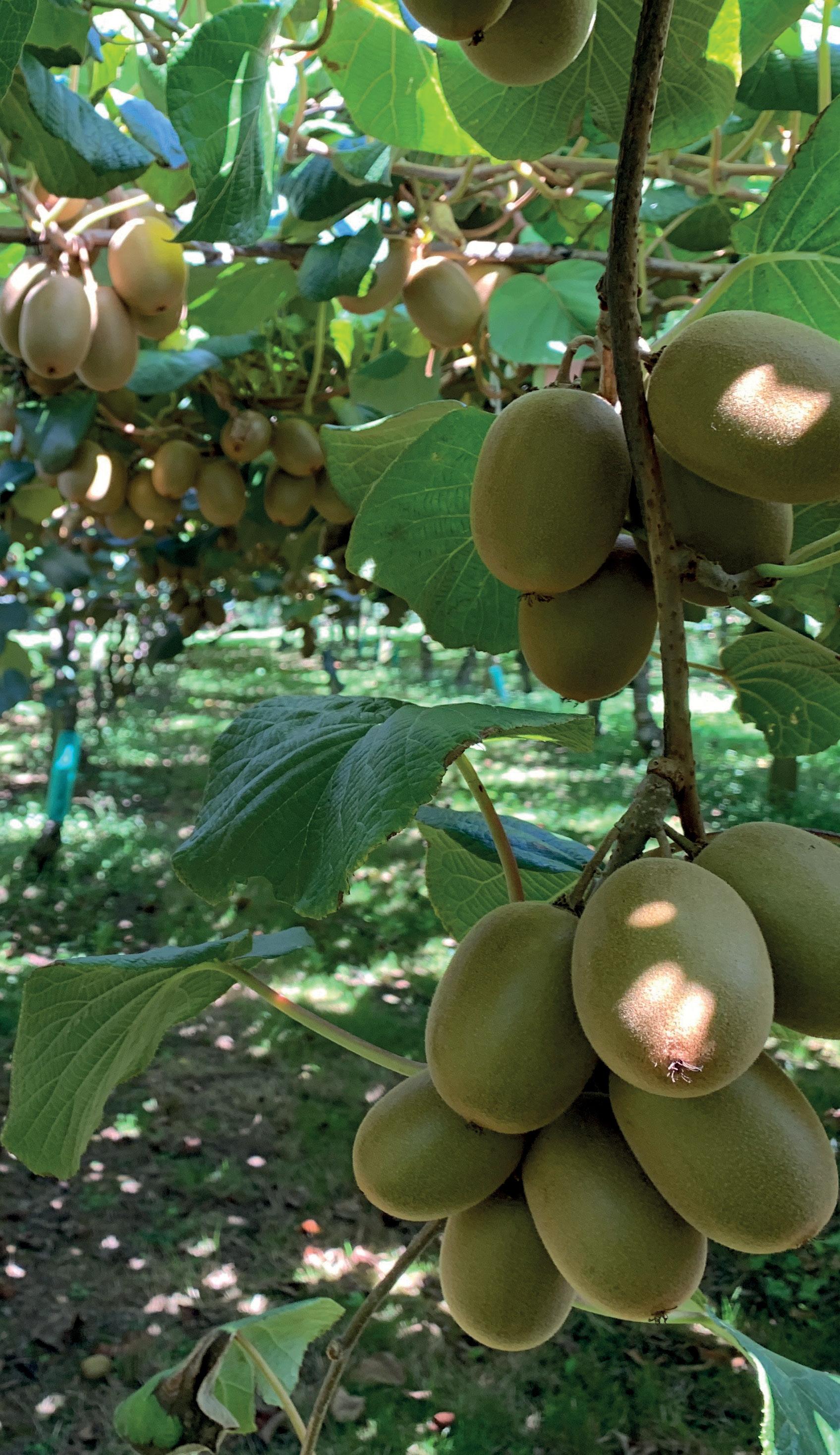
environmental impact and can be designed to offer environmental benefit.
Abstracting water during higher flow periods and storing it for release when flows are under pressure is a win-win, supporting freshwater health and improving the reliability of access to water for irrigators.
While small on-farm storage facilities are a good option in many places, they can be challenging on flat, free-draining horticultural land that is often made up of small properties that are fully utilised without space for storage.
In some catchments it makes more sense to have some water storage located higher up in catchments serving multiple properties lower in the catchment or stored within groundwater and beneath productive land. The best approach is catchmentspecific, depending on the hydrology and landscape.
Many catchments are quite modified in terms of natural storage. This is due to deforestation, resulting in peaky flows from hill country, and minimal storage in lowlands where wetlands have been drained and flood protection has disconnected rivers and floodplains.
Harvesting water in such catchments would slow down peak flows, allowing water stored in ponds, dams, and groundwater to be released gradually as needed, more closely mimicking natural storage. This would have limited impacts on flow regimes and create benefits for the environment. Water storage and augmentation can be designed to utilise natural hydrological conveyance within rivers and storage within groundwater, working efficiently with nature.
However, creating storage costs money, so there must be a commercial benefit.
Growing municipalities have taken the approach of seeking to transfer water traditionally used on highly productive land to urban uses, making less water available to irrigators. This requires irrigators to pay for storage to meet their existing irrigation demand, which effectively passes the costs of urban growth onto rural businesses.
Climate change is a global issue, not caused by irrigation. However, some policy seeks to pass on all the costs of stream flow augmentation or groundwater recharge to mitigate the effects of climate change onto irrigators. Policy should ensure that all who benefit contribute to the cost of water storage facilities.
While small on-farm storage facilities are a good option in many places, they can be challenging on flat, freedraining horticultural land that is often made up of small properties that are fully utilised without space for storage.
When it comes to irrigation, there are various catchment-specific options and solutions, but it can be complex to gain consent for storage or to expand irrigated land areas. HortNZ supports in principle the Fast-Track Approvals Bill currently before Parliament, because we consider the process to build new water storage too difficult. HortNZ has sought some changes to the Bill to ensure decisions made through the process are enduring.
We are also advocating for the National Policy Statement for Freshwater Management to be more enabling for storage augmentation and water transfers at Freshwater Management Unit level.
Currently, there is a lack of clarity in the statement regarding the appropriate scale of setting freshwater limits and outcomes, making it difficult to achieve a catchmentscale approach. This reduces the ability to share water, augment flows, and increase irrigation.
Climate change is not created by horticulture, but the sector is under pressure

because of it. Fruit and vegetable production creates a lower greenhouse gas emissions impact than other food production. Perennial horticulture has less water quality impacts than many other primary production activities.
Horticulture is a highly valuable export industry and aligns with the Government’s goals to increase exports, but access to reliable water is essential to support this industry to expand.
Horticulture produces food for New Zealanders in a geographically isolated country that cannot import fresh vegetables at the volumes needed to support the health of our population. Access to reliable water is essential to support these domestic producers.
We need integrated policy that supports these aims in ways that manage environmental impacts and create benefits for the economy of New Zealand and the health of New Zealanders.
Anderson Lloyd is the trusted legal advisor for major players in New Zealand’s irrigation sector, with a proven ability to deliver results.
We have advised on numerous existing and proposed schemes in the North and South Islands and act for individual farmers and agribusinesses.
Our specialist team advises on all aspects associated with large-scale irrigation schemes including banking, capital raising, commercial contract, resource management and construction matters.
David Goodman, Partner p: 03 335 1235 m: 027 787 8785
david.goodman@al.nz
Sarah Eveleigh, Partner p: 03 335 1217 m: 027 204 1479
sarah.eveleigh@al.nz















































































































































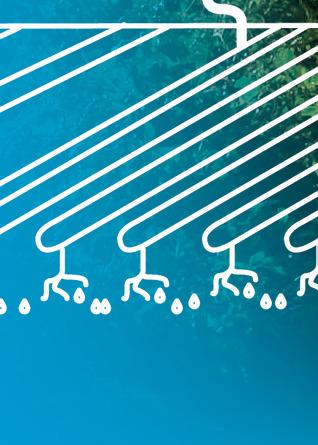














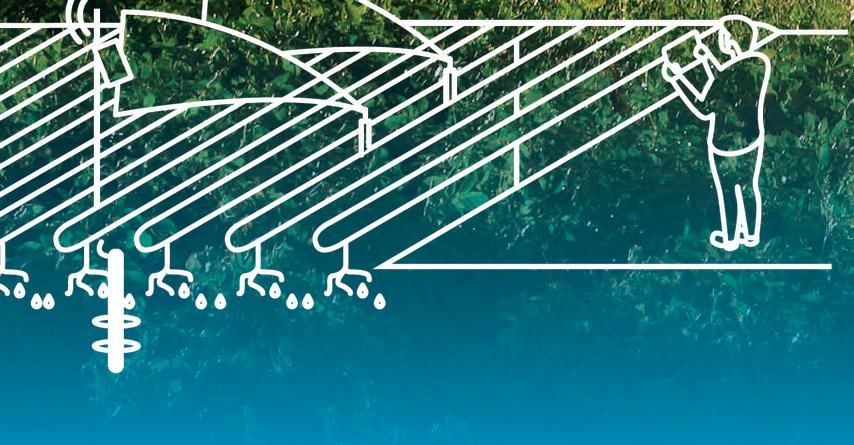






















































































Nominate a significant contributor and recognise excellence.
The Ron Cocks Memorial Award is presented every two years to acknowledge a person who has made a significant contribution to irrigation in New Zealand.
J.R. (Ron) Cocks was a Mid Canterbury farmer who was recognised as a pioneer, visionary, and leader in farming affairs. His greatest legacy was leadership in water issues. The Ron Cocks Memorial Award acknowledges his legacy and encourages others to follow his leadership. The criteria for the award include:
• duration of service
• quality of service
• actual achievement
• level of voluntary input
• leadership.
Nominations close on 31 July 2024. To put forward a nominee, visit the IrrigationNZ website.
Ian McIndoe was the winner of the Ron Cocks Memorial Award in 2022. He has over 40 years of experience in water resource engineering and agricultural engineering, particularly in advisory and consulting roles. He has been involved in a wide range of water allocation and water resource management projects at both policy and technical levels. Find out more about Ian on page 30

Win a $2,500 cash prize for an innovation developed in New Zealand.
This award is to celebrate, encourage, and promote innovation in irrigation, and the positive actions made possible in our communities thanks to irrigation. It recognises people doing extraordinary things on farms, in schemes, in business, or supporting service industries. Entries are reviewed by considering the potential for the new knowledge to have a positive impact on irrigation through technological development or in a manner that will enhance the economic, social, cultural, or environmental aspects of irrigation.
Entries close on 31 July 2024 with judging commencing from 8 August 2024. For award information and entry forms visit the IrrigationNZ website.

H2Ortigator is an irrigation and plant protection unit for young replacement trees and vines in commercial horticulture – apples, grapes, kiwifruit, avocado, and more. It provides protection and creates ideal soil moisture conditions for the replacement tree or vine, increasing early growth and decreasing replacement mortality, all while saving water. The unit works in conjunction with, and is controlled by, the existing irrigation system (drip or micro sprinkler). It accumulates water at the tree and continues to provide precise, ultralow rate irrigation directly to the replacement tree’s root zone for up to three days once irrigation for the mature tree has ceased.
The judges noted the deciding factor which got them over the line was the ability to achieve short term productive advantages combined with efficiency and long term sustainability all in one product, which is rarely achieved in the irrigation industry. Brendan and Hayley Hamilton developed H2Ortigator.
Please mark your calendars for the IrrigationNZ Awards Evening which will be held in the ANZ Building, 171 Featherston Street, Wellington. The Ron Cocks Memorial Award and the Innovation in Irrigation Award will be celebrated, and winners will be honoured at this prestigious event. This exciting evening follows the AGM, which will be held earlier that day. Drinks and nibbles will be available on the night thanks to the generous sponsorship of Anderson Lloyd.

At IrrigationNZ, educating the food and fibre sector remains a cornerstone of our mission. Since mid-2023, we have been collaborating with Muka Tangata, the Workforce Development Council for the food and fibre sector, to develop new credentials that better support both learners and the industry. These new, standalone micro-credentials provide learners with a quick and efficient way to demonstrate specific skills in areas like water measurement and reporting. This focused approach allows learners to showcase their abilities without needing to complete larger, more comprehensive qualifications. By offering these targeted achievements, we ensure that our workforce is equipped with the precise skills needed to excel in their roles, thereby enhancing the overall competence and efficiency of the sector.
Jeremy Baker is the Chief Executive at Muka Tangata. Jeremy has held senior leadership roles in industry, government, and education, including positions at Beef + Lamb NZ, Lincoln University, and the Industry Training Federation. With expertise in labour market economics and education policy, he is passionate about understanding future workforce needs and creating solutions with industry partners.
Jeremy is a member of the New Zealand Qualifications Authority (NZQA) Board and has chaired the Ministerial Review of the National Certificate of Educational Achievement (NCEA). He also contributed to He Waka Eke Noa – the Primary Sector Climate Action Partnership.
We caught up with Jeremy to find out more about his role and about agriculture qualifications, including types of learners, barriers to completion, and issues with employee retention.

What does Muka Tangata do, and what is the difference between training and formal training?
Muka Tangata is the Workforce Development Council for the food and fibre sector in New Zealand. It plays a crucial role in enhancing vocational education and training (VET) to meet the needs of industry, iwi and hapū Māori, learners (ākonga), and workers (kaimahi). Muka Tangata focuses on developing qualifications, standards, and microcredentials to ensure that people in the food and fibre sector have the skills necessary for their careers. Muka Tangata also advises the Government on funding for these educational initiatives, striving to support diverse needs and promote equitable outcomes in the sector.
There are three things that formal training should include: clear motivation to learners where they receive something at the end; industry standards; and desired labour market skills. Formal means it is properly recognised at the end, including the process of an assessment, checking, and quality assurance to make sure the training is valid.
What are some common types of learners you encounter in the agriculture sector, and how do their needs and learning styles vary?
There are a range of learners, from people at entry level through to those who have already done qualifications through to those who are wanting to get into leadership. It’s a very dynamic sector and people move a lot between the industries. Changes in roles can come within 18 months, and at the entry level we need to have clear pathways that accommodate people who don’t just stay in the same job. Entry level learning needs to fit a range of roles – people may end up somewhere different from where they were when they began gaining qualifications. Our aim is to create a learning programme that they can follow wherever they are.
What are some barriers to completion?
1. Complexity of training programmes:
Some training organisations make their programmes too complicated, which can overwhelm learners and hinder their progress. Simplifying the structure and requirements of these programmes can help reduce this barrier.
2. Challenges for small groups and distant learners:
Training small numbers of learners and those in distant locations poses significant challenges. Ensuring that training is accessible to these groups through online platforms, virtual classrooms, and flexible learning options is essential to overcoming this barrier.
3. Cost of practical work-based training:
Practical work-based training needs to be made accessible to bridge the gap between people already in the system and those coming in.
Providing financial assistance, partnerships with businesses, and leveraging technology for virtual practical training can help make these programmes more affordable and accessible.
What efforts are being made to remove these barriers?
Micro-credentials are a recent development which offer a good opportunity to complete bite-sized amounts of training and simplify the learning process. These smaller, focused units of learning can make it easier for learners to achieve their goals incrementally, leading to higher completion rates.
Removing barriers is something on which we are working hard. By simplifying training programmes, utilising micro-credentials, making
Workers are vital to our economy, particularly in the food and fibre sector, where the return per worker is $130,000 compared to $11,000 in other sectors. Given this significant contribution, it’s essential to support these workers in becoming more productive.
training accessible for distant learners, and reducing costs, we aim to create an inclusive and supportive training environment that facilitates completion for all learners.
Employee retention is often a challenge in various industries. From your experience, what are some specific issues with employee retention, particularly among entry-level positions?
Encouraging employers to invest in employee training is essential. There’s often a concern that if employees are trained they might leave for better opportunities. However, the reality is that if employees aren’t trained they’re more likely to leave due to a lack of growth opportunities.
Investing in staff development not only enhances their skills but also increases their loyalty and job satisfaction. When employees feel valued and see opportunities for advancement, they are more likely to stay with the company.
Creating and sharing development tools across the organisation can ensure consistent training and development opportunities, fostering a culture of continuous learning and improvement. Entry-level positions, which represent the most flexible and mobile part of the workforce, benefit significantly from robust training. Enhancing the skills and adaptability of these employees benefits both the individual and the organisation.
By prioritising employee development and creating tools to facilitate training across the system, employers can build a more skilled, loyal, and adaptable workforce.
What strategies or initiatives have been implemented to address the challenges of learner retention and qualification completion?
Over time, we have modularised the training to better accommodate individual differences. Employer, employee, and regional demand varies, making it essential to identify common needs more effectively. This ensures that people can recognise the relevance and value of the training to their specific circumstances.
In the past, some courses were poorly named or had their qualifications renamed, which diminished their brand recognition within the industry. It’s crucial that qualifications have clear, straightforward names to ensure they are easily recognised and understood. By focusing on plain English qualification names, we can maintain their industry reputation and significance.
How do you see technology and innovation shaping the landscape of entry-level agriculture qualifications in the coming years?
The way people use technology at the entry level is crucial, as it becomes an integral part of their work. The food and fibre skills training
framework emphasises core transferable skills, many of which encompass technical knowledge. As every industry evolves and changes, these core skills must be comprehensible to help build resilience and foster innovation within the system.
Workers are vital to our economy, particularly in the food and fibre sector, where the return per worker is $130,000 compared to $11,000 in other sectors. Given this significant contribution, it’s essential to support these workers in becoming more productive. This can be achieved by ensuring they have access to relevant, high-quality training that enhances their technical skills and adaptability, thereby driving further innovation and efficiency in their work.
Are there any emerging trends or developments in the agriculture industry that are influencing the demand for specific skills or qualifications?
Consumer demands and regulatory requirements, such as those related to the environment and irrigation, are constantly evolving, necessitating changes in our training programmes to keep pace. These shifts drive technological advancements, which in turn influence the skills and knowledge required in the industry.
As society changes, employers must manage a diverse workforce that spans various ages and career stages. Ensuring that our training programmes are fit for everyone in the system is crucial. This involves
providing clear guidance and pointers to those designing these programmes, ensuring they can develop relevant, adaptable training that meets the current and future needs of the workforce. By doing so, we can help employers and employees stay competitive and capable in a rapidly changing environment.
Lastly, looking ahead, what do you envision as the future of entry-level agriculture qualifications, and what opportunities do you see for individuals entering the field?
The vision is to establish a strong central core of flexible qualifications, complemented by a range of specialised training options tailored to specific industries.
Additionally, we plan to introduce a variety of micro-credentials that serve as refresher courses. This approach allows individuals to continuously update their skills and build a comprehensive portfolio of qualifications that reflect their ongoing professional development.
Muka Tangata is currently undertaking two simultaneous qualification development projects for all food and fibre entry level and agriculture qualifications, standards, and micro-credentials. If you’d like more information about these projects, please email AELproject@mukatangata.nz.

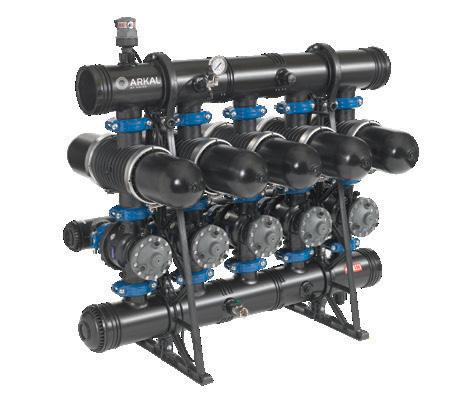
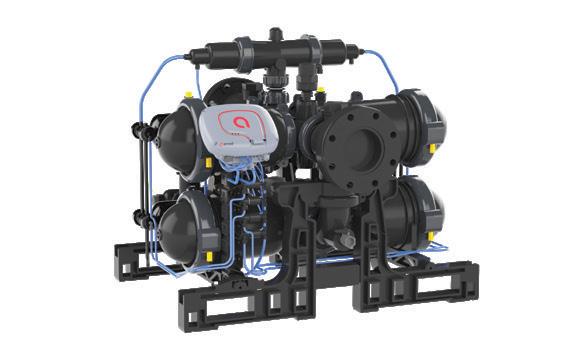
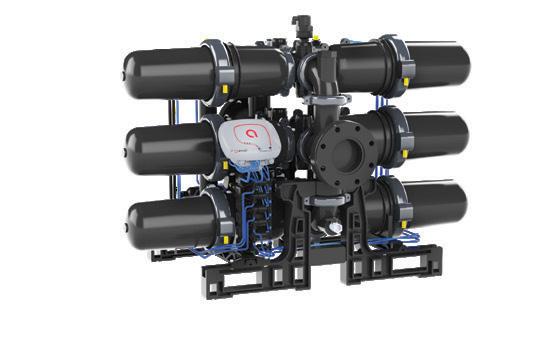
For more information contact Water Supply Products: Auckland: 09-916 0094 Christchurch: 03-348 1293 wsp@watersupply.co.nz www.watersupply.co.nz
Every year FMG supports hundreds of clients who’ve suffered fires in their homes or farm buildings. Although we can help with replaceable items, there is also emotional stress and the potential loss of irreplaceable treasured possessions to consider. Fires in buildings are often preventable if the right measures are taken. There are some slightly unusual fire risks of which it is good to be aware.
Charging your devices –lithium-ion batteries can overheat, catch fire, or explode
We’ve seen clients who have suffered losses to their buildings, contents, and vehicles caused by lithium-ion batteries. One of these was a total loss house fire that cost $1 million to replace. The fire was caused by batteries charging in the garage.
Many modern devices are powered by lightweight, high-energy lithiumion (li-ion) batteries. These power our phones, laptops, tools, e-bikes, e-scooters, vapes, and even cars.
Lithium-ion batteries can catch fire for several reasons.
• Overcharging or using incorrect chargers
• Overheating or exposure to extreme temperatures (hot or cold)
• Physical damage like drops or punctures
• Short-circuits, malfunctions, or manufacturing defects
When these batteries fail they can emit toxic, flammable, and explosive gas that can cause intense, self-sustaining fires that are difficult to extinguish. It is important that you read and follow the prevention advice below.
Ten ways to prevent device or battery fires
• Avoid leaving devices charging unattended or overnight*
• Disconnect fully charged batteries and devices
• Avoid exposing devices to heat, moisture, or direct sunlight
• Only buy genuine devices and equipment
• Only buy devices and equipment from trustworthy manufacturers and retailers
• Only use the correct and approved chargers for your device
• Never charge devices on flammable surfaces
• Never charge your devices in bed, or on flammable material or surfaces
• Discard damaged devices showing signs of swelling, leakage, or overheating
• Install approved smoke or heat alarms in charging areas to help give an early warning of extreme battery overheating or fire
Electric vehicles and marine batteries may have manufacturers’ recommendations regarding charging overnight. Please seek professional advice specific to your vehicle or boat.

Drying your washing –clogged vents, ducts, and filters can cause dryer fires
We’ve seen clients suffer traumatic damage to their houses and businesses due to overloaded dryers catching fire. One commercial client suffered $3 million in damage after the contents of a dryer over heated and burst into flames.
What can you do to prevent a dryer fire from happening to you?
• Clean the lint filter between each load. Lint build-up can result in filters overheating and igniting even after the dryer is turned off.
• Overloading can cause excessive heat to build up. Allow for at least a quarter of the dryer to be free so items can move around and aerate.
• Use the correct settings. If you must use the dryer for items soiled with fats and oils, such as tea towels, ensure you wash in hot water first and use the lowest heat setting with a cycle that includes a cooldown period.
Rodents moving inside to the warm – chewed wiring can spark a fire
Tiny culprits can cause a huge amount of damage to your home or farm building. Chewed wiring can cause a short and result in sparking that can easily start a fire. Any build-up of easily flammable material that can ignite will increase that risk. It’s a good time to get pest control underway and check switchboards for things that could easily ignite, such as leaves and birds’ nests. Don’t forget to also check your farm buildings, such as woolsheds, dairy sheds, and pump sheds where pests seeking warmth can get in easily.
During the last seven years over 5,000 native seedlings have been planted as part of a biodiversity project from Waimakariri Irrigation Limited (WIL). The project was launched in 2018 after 297 sites of ecological interest were identified across the irrigation scheme’s 44,000-hectare command area.
Fourteen projects are currently underway, including two projects at the Cust River, three projects at Burgess Stream, and one project each at the Old Eyre and Hunters streams.
WIL biodiversity project lead Dan Cameron said the initiative aims to protect existing areas of ecological significance while also identifying sites for restoration that can improve biodiversity across the entire catchment.
“It’s not about doing projects here and there. We focus on areas of significance and look at sites that are connected to shareholder land and the wider catchment.”
The concept of connectivity is key to Dan’s work, and he believes this will drive the success of the project over the long term.
“Connectivity is a key principle of biodiversity, and we can’t work on habitat creation and restoration in isolation. We need to consider connections between each site with a view to eventually creating an ecological corridor that provides pathways for native fauna to follow.
“This is a long-term project over 30 to 40 years that extends beyond the irrigation scheme. We have already included local schools in this project, and over time will broaden the scope to other organisations and the wider community.”
WIL CEO Brent Walton said the map of key sites produced during the 2018 biodiversity survey has proved to be a useful tool for engaging with shareholders.
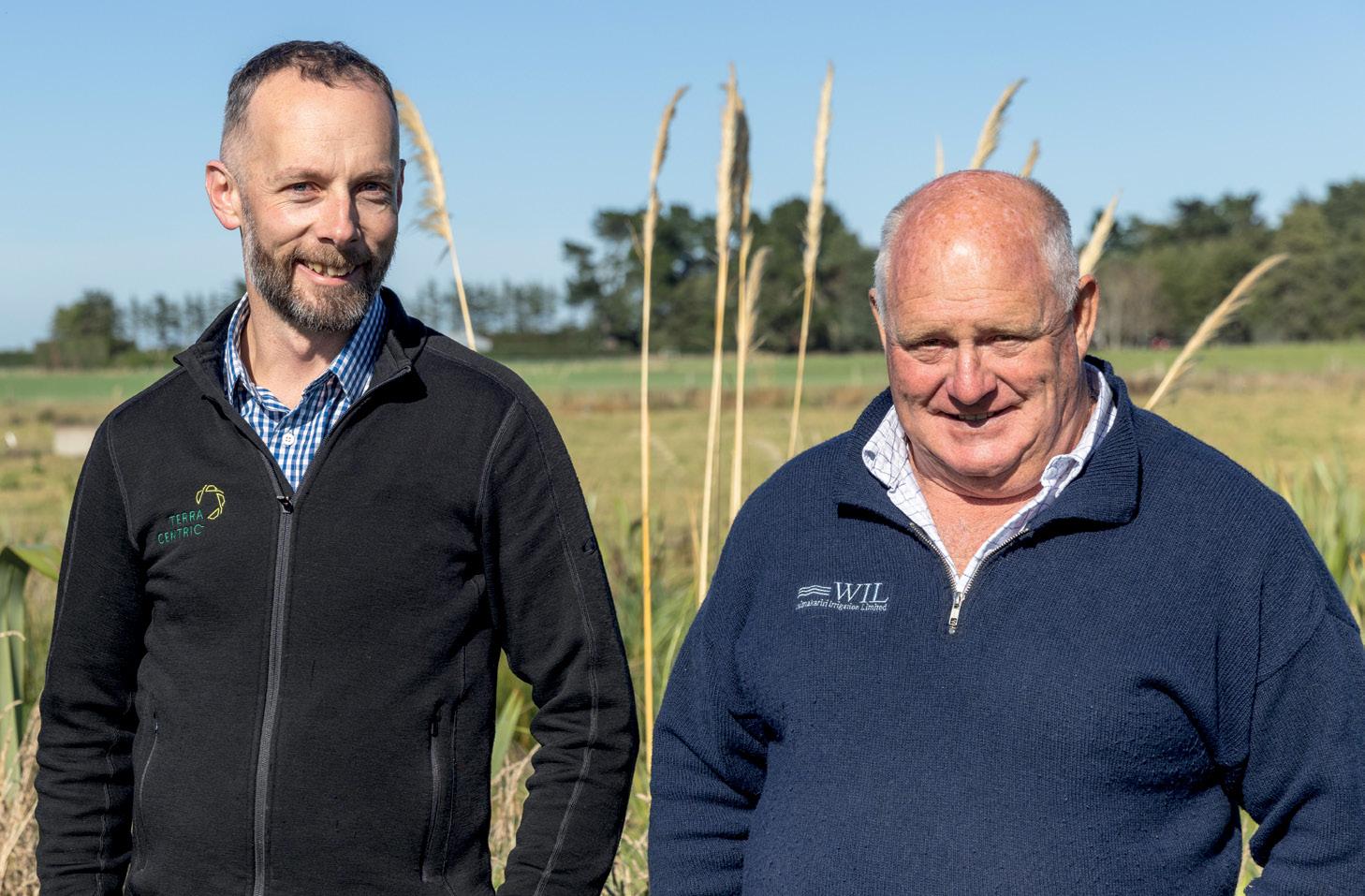
“Having this map of all the sites has given our farmers a visual idea of how the work that they are doing on their farms connects with the entire catchment.
“If we work our way up from the mouth of the Waimakariri River there are areas where we have connections, and if we can fill in those areas we can create a good pathway.”
The project has used technology, including drones, to efficiently gather data from each restoration site, which can then be shared via mapping software. Dan said technology is also helpful for practical aspects such as planting near farm infrastructure.
“We use the drone together with mapping software which provides data and metrics to track our progress. It is very efficient, and we use it to measure everything, including obtaining answers to practical issues such as which native plants will fit under pivots.”
While improving and protecting biodiversity is a regulatory requirement for WIL, Brent and
the cooperative view ecological restoration as part of their commitment to the broader community.
“Primarily, it’s the right thing to do. When you look at it from a catchment approach, what we do here on our farms impacts non-WIL shareholders and the community downstream. We want to improve what we already have here in terms of biodiversity and then work together with other organisations and the community to create those long-term connections from the sea to the mountains.”

Do you have a canal, canal embankment or reservoir as part of a canal system?
New dam safety regulations came into effect in May. We’ve been asked by INZ members what the situation is with canals and reservoirs.
To clarify, dams or similar water retention structures that are canals need what’s known as a potential impact classification (PIC), and any structures relating to the canal might also need one.
Different sections of a canal may require different classifications, and each section must be assessed separately.
Dam safety assurance requirements
• Depending on the PIC, a dam-canal may also need a dam safety assurance programme (DSAP)
• If a single owner owns a whole canal, one DSAP is enough.
Single reservoir
One DSAP is sufficient for all dams forming a single reservoir, but each dam still needs a PIC assessment.
Different sections of a dam-canal, including both or separate sides of fill embankments, can have different PICs. The highest PIC rating applies to the entire dam-canal.
If a dam is part of a larger scheme, its DSAP can refer to scheme-wide policies and procedures.
Measurement
The height of a dam is the vertical distance from the crest of the dam and must be measured — in the case of a canal, from the invert.
If you’ve got any questions about this article, please email damsafety@ecan.govt.nz

The Canterbury Regional Council (Environment Canterbury) has decided to appeal the recent High Court decision relating to the Ashburton Lyndhurst Irrigation Ltd (ALIL) discharge consent.
We have done this because the decision has highlighted a need for clarification of the intention behind section 107 of the Resource Management Act (RMA).
The decision has potentially serious repercussions for the way freshwater improvements are achieved, both in Waitaha/Canterbury and across New Zealand.
The Canterbury Land & Water Regional Plan sets a framework by which resource consents can be granted in areas with degraded water quality if significant reductions in the discharge of contaminants can be achieved over the life of the consent.
However, in the ALIL decision, the High Court found that the RMA does not allow for reductions in the discharge of contaminants to occur over time where the discharge, either by itself or in combination with other discharges, has given rise to significant adverse effects on aquatic life.
The Court’s interpretation of the RMA calls into question the framework Environment Canterbury developed with our mana whenua partner and communities over a long period to drive freshwater improvements.
The approach taken to freshwater management in Canterbury has been successful in promoting continued economic progress via productive use of resources while at the same time addressing the environmental impacts of these activities.
There also appears to be a misalignment between the RMA and the National Policy Statement for Freshwater Management, which recognises the need to drive improvements within a timeframe that is both ambitious and reasonable – within a generation, for example.
We have decided to appeal the decision because of its potentially wide impact – both in Canterbury and nationally – and it is important for the regional council, consent applicants and communities across New Zealand, that we have clarity and certainty.
In the meantime, we are bound to apply the law as it currently stands – as reflected by the High Court decision, which means we need to apply the decision when considering discharge permits in future.
Because the matter remains before the court, we don’t yet know how long it will be before the appeal is heard.
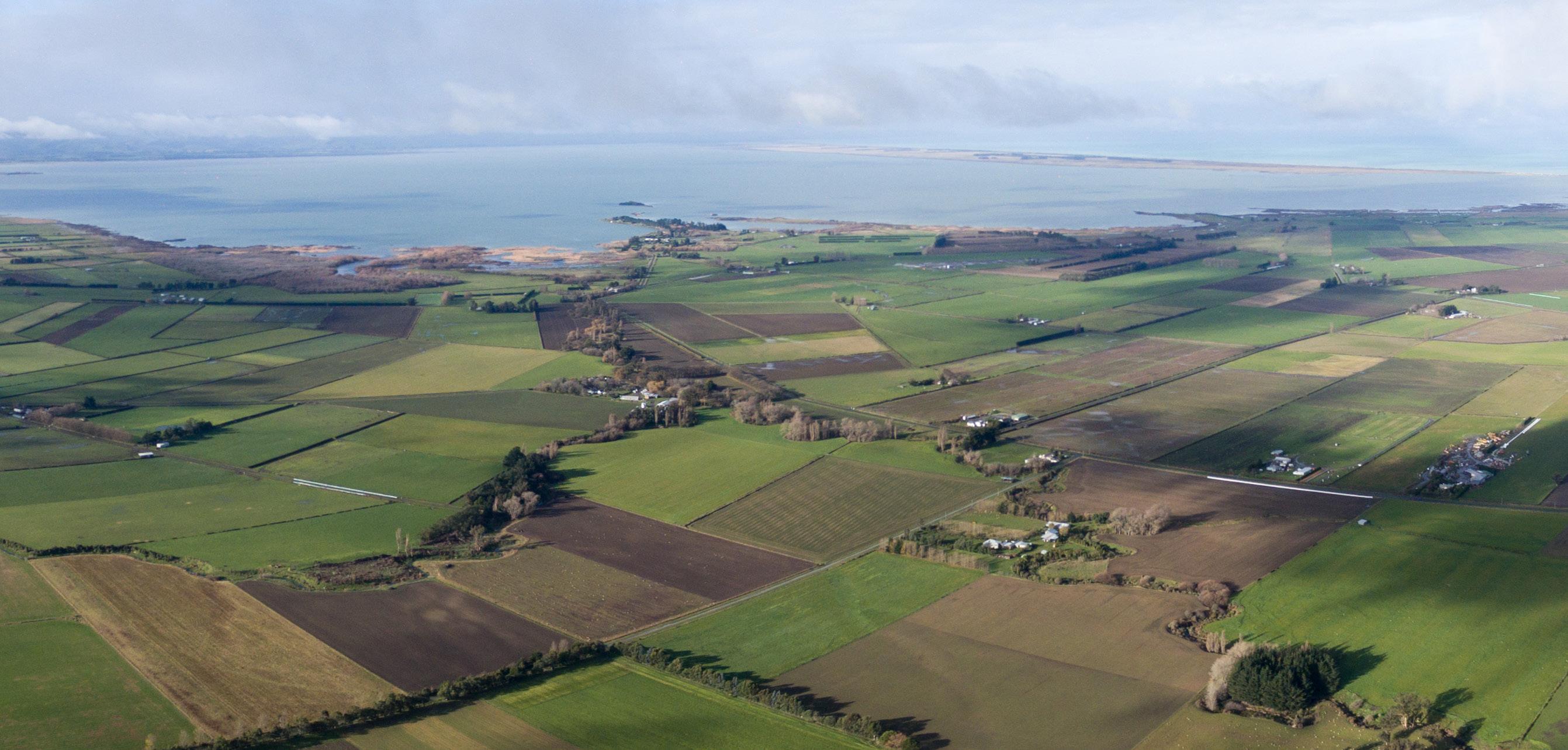



The winter months are a good time to make sure the fences and barriers along your farm waterways are up to scratch.
Cattle, deer and pigs can have a serious impact on water quality. Sheep are less of a problem unless they are present in very high densities, for example, when they are break-fed on a forage crop with no action taken to prevent direct access to water.
Managing your margins
Not only is waterway health improved by the vegetation and management of riparian strips, but well-managed margins can also help meet market-level sustainability and biodiversity expectations, improve farm aesthetics and value, and enhance farm and stock management –all the while protecting water quality, freshwater life and mahinga kai values into the future.
Waterways – what do I need to know?
Good Management Practices are an industry agreed code which helps guide management of farm resources while minimising environmental risks to water quality. There are also rules and regulations within our Land & Water Regional Plan.
Fencing waterways off from stock helps by:
• preventing stock waste entering water (reduces direct nutrient, faecal bacteria and animal parasite contamination)
• protecting stream banks from erosion and pugging damage to wet soils and stream beds
• reducing grazing pressure on vegetated riparian buffers – dense growth helps filter nutrients entering the waterway via paddock runoff or sediment loss
• keeping stock away from waterways where they can become bogged or stuck.
For further information on the stock exclusion rules and regulations that may apply to your farming operation, check out our Farmers’ Hub. Information on fencing and management of waterways is also available on the DairyNZ and Beef + Lamb NZ websites
Ensure stock is permanently excluded from prohibited waterways and from waterways if they are intensively farmed. Exclude stock from significant waterways and wetlands.
Exclusion of extensively farmed stock from waterways in hill and high country areas may not be practical, however, a mix of mitigations and practices can be used to minimise sediment and faecal bacteria losses from farms by hot-wiring sensitive areas where stock is grazing.
Manage stock crossing to avoid waterway degradation.
Stock access to waterways can have negative impacts on their health and productivity. Shifting to a reticulated system is an investment into your property and the overall health of your stock.
Provide shade and shelter away from waterways where appropriate.
Place salt blocks and supplementary feed away from riparian margins.
Leave an appropriate buffer (depending on slope) to filter runoff, even if only temporarily during vulnerable periods.
For more information, visit ecan.govt.nz/stock-exclusion. Our Advisory Services team can connect you with your local Land Management Advisor to provide on-farm support in meeting all stock exclusion requirements — phone 0800 324 636

We know it’s been a tough summer and autumn for farming in Canterbury. There’s every chance we could be in for a challenging winter. That’s why it’s vital you’re prepared for mitigating the risks to freshwater that come from winter grazing.
Make sure staff know the plan and how to follow it
The key to successful grazing over winter is to have a written winter grazing management plan, which is shared with and understood by all staff.
As part of your plan, remember some of the top actions that can help reduce contaminants reaching waterways:
• Leave an ungrazed buffer around critical source areas to minimise the possibility of channelling overland flow directly to waterways
• Graze the paddock strategically by fencing across slopes and starting grazing at the top of the paddock where appropriate so standing crop can act as a filter
• Have troughs and supplementary feed placed strategically away from waterways and critical source areas
• Plant a catch crop after grazing – where manageable plant a fast-growing crop in spring such as greenfeed oats. This can make a dramatic difference to nitrogen losses from the paddock.
Meet with your team and make sure they all know the plan and what to do if adverse weather conditions hit.
Regulations are changing, but good management practices remain key
As you will know, the government has announced its intention to repeal national intensive winter grazing regulations later this year.
If and when those changes become law, specific resource consents for intensive winter grazing will no longer be required in Canterbury.
However, there are still rules and expectations for Canterbury farmers around managing winter grazing well and limits on nitrogen loss that need to be considered, and may impact on how much winter grazing can be undertaken on your farm.
Other expectations include excluding stock from rivers, lakes and wetlands; ensuring contaminants are not entering waterbodies; implementing GMPs and ensuring you have a documented winter grazing management plan.
Many farmers also continue to have a Farm Environment Plan audit as part of their consent requirement or being a member of an irrigation scheme.
For more information about making a winter grazing management plan, as well as links to industry templates, visit ecan.govt.nz/iwg
Taking action together to shape a thriving and resilient Canterbury, now and for future generations.
Toitū te marae o Tāne, toitū te marae o Tangaroa, toitū te iwi. ecan.govt.nz

Discover the Zimmatic difference.
Zimmatic pivot and lateral-move systems combine high-quality components with exclusive structural designs and innovative features for a long-lasting solution you can count on.
Contact your local Zimmatic dealer find out more.
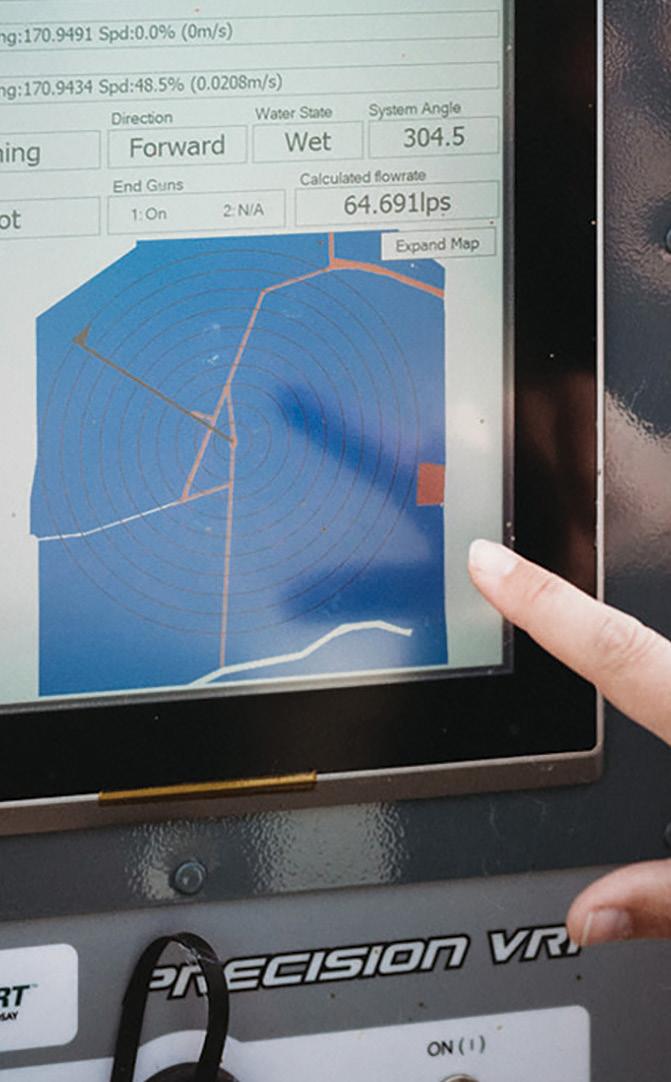


Determined to help grow food more sustainably and support the New Zealand wool industry, Jacinta and Greg Penn have embarked on an innovative journey to revolutionise indoor farming.
Jacinta grew up in an urban area, and while growing up she always looked forward to visiting farming friends and family during her school holidays. Now, based in Pukekohe, surrounded by the agricultural landscape, she has witnessed first-hand the challenges faced by crop growers. With housing competing for available land, erratic weather patterns disrupting growth cycles, and persistent labour shortages, the need for resilient and sustainable farming solutions has never been more pressing.
Jacinta, who has her own digital technology company, pursued a Masters in Future Technologies, driven by her passion for innovation and sustainability. During her studies she became particularly interested in vertical farming, a method she recognised for its potential to mitigate the impacts of weather extremes. Vertical farming, with its ability to produce crops in stacked layers within controlled environments, offers a promising alternative to traditional farming methods.
She completed her studies in 2021. At this time she did an agritech STEM pilot project for schools using hydroponic garden kits, with plants growing in plastic foam sponges. She quickly identified a significant gap: the absence of sustainable growing media alternatives.
“At our property we have one small paddock, home to one fat sheep which we shear every six months. We had just left the wool on the ground in the paddock because it’s not worth selling. Then we noticed how long it took to biodegrade.”
Jacinta then commenced a series of experiments, attempting to develop greenhouse growing blocks with wool.
“I spent many hours next to the kitchen sink trying to get it to work. By April 2023 I had a bit of a prototype which I showed to a local grower, and he encouraged me to pursue it.”
The 3D shape she created was an alternative to the current growing medium used in commercial greenhouses and indoor farms, and also aligns with the principles of sustainability growers are striving for. This has been showcased through their commercial trial with a local grower, which has now been going for nine months.
“We have had mixed results from different prototypes but some of them have worked really well. It is very rewarding that growers can see the value in it.”
“My Masters was very focused on the problems of the world and practical solutions. Considering wool prices being very low and the ongoing challenge of creating less waste, this ticked both of those boxes.”
Fleecegrow was formed in 2023 and was fortunate enough to get grants from both Callaghan and Agmardt.
When it came to water, Jacinta said that irrigation was a key component of indoor growing, and was generally done with drip irrigation or fertigation. This holds all the nutrients needed for plant growth.
Wool can hold 30 percent of its weight in water, therefore can hold it available for the plant without the plant being wet or waterlogged. Wool is more than 10 percent nitrogen, which is slowly released as it decomposes. Both of these natural features are hugely beneficial for plant growing.
Like in starting any business, there have been some challenges, Jacinta said.
“My husband Greg is a big part of it all and has been really supportive. Basically, I have the crazy ideas, and he helps me build them. There have been some late nights and early mornings, and we’ve been prepared to make some compromises to get it off the ground as we both see it as too important not to do.”
Jacinta also said they have had great support from Wool Works and Wools of NZ, including a factory visit and several brainstorming phone calls on costing and production.
“New challenges come up all the time, like discovering a rule in Australia that you can’t grow plants in imported wool. But, Wool Impact has helped us work with the Ministry of Primary Industries (MPI) here in New Zealand and the Department of Agriculture, Fisheries and Forestry (DAFF) in Australia. Together we have figured out a way to work with Australian researchers that are keen to try the prototypes.
She said the current goal is for them to demonstrate how wool can support the growth of healthy plants with lots of fruits and vegetables. “It needs to be an easy decision for growers to make the switch.
“My vision is for us to be a large New Zealand company and help support improving the market for the wool industry.”
They are also working on creating new products, such as a wool fertiliser pellet to be used for slow release nitrogen nutrients and water retention, and a liquid wool fertiliser for an added nitrogen boost for turf.
Fleecegrow have been announced as a finalist in the Fieldays Innovation awards in the prototype category. They have completed a feasibility study with Callaghan Engineering, and once a few more trials are complete they plan to look for funding to build a production line at the end of the year.


Growers keen to trial samples and provide detailed feedback are encouraged to join their waitlist via their website www.fleecegrow.com.

The product is designed to support indoor plant growth from seedling to full maturity and production.

Rachel Brooking Labour Environment spokesperson, Member of Parliament for Dunedin, and former Resource Management lawyer
As the new Labour spokesperson for the Environment, I welcome the opportunity to interact with you – people who use water to increase the productivity of grass and other animal feed, as well as a wide range of crops and other horticulture. I am also Labour’s spokesperson for Food Safety and recognise the importance of food production to both our export economy and the nutrition of New Zealanders.
I am acutely aware of the need for exporters to demonstrate they are meeting environmental standards and not degrading waterways, especially in relation to the European Union. And New Zealanders care deeply about freshwater quality and want to see it getting better over time, not worse.
Better freshwater quality, and therefore swimmable rivers, was a main issue of the 2017 election campaign (before I was in Parliament). The Labour-led Government then implemented the Essential Freshwater package in 2020, with various refinements in its second term. Clearly not all of these regulations are directly related to irrigation, but in my view, irrigation cannot be separated from issues of water quantity and quality. The quantity of water in a waterway can impact on water quality – is the flow high and frequent enough to maintain freshwater health and to allow native fish to pass? And access to water enables land to become much more valuable.
The SPA would have joined up local and central government with mana whenua to develop 30-year plans for growth, related infrastructure planning, and hazard avoidance. It required a spatial plan at the regional level, with a regulatory plan being made at regional scale under the NBEA. NBEA plans would also include environmental bottom lines, including for freshwater – being those found in the Essential Freshwater package. In addition, the NBEA was more sophisticated than the RMA in terms of water allocation.
Hasty drafting means that preferred projects meant to be listed in the Bill are missing, so neither the select committee considering the Bill nor the numerous public submitters can scrutinise them.
The RMA treats applications for water take on a first-come-first-served basis, with some ability to move consents around within a catchment. Water permits can be granted for up to 35 years (though they are often granted for less time) and can be renewed. This approach works when there is no scarcity of water in a catchment. But the reality is that many catchments are fully allocated, and landowners without access to water are unable to add value to their land because the catchment’s water is already spoken for. This is unfair and does not necessarily lead to the best economic outcomes.
More water storage is needed, especially in eastern areas which are drying as a consequence of climate disruption. But it is critically important that additional storage does not lower water quality.
In addition to the Essential Freshwater Package, the last Government also replaced the Resource Management Act 1991 (RMA) with the Natural and Built Environment Act 2023 (NBEA) and the Spatial Planning Act 2023 (SPA). Both these Acts were then promptly repealed by the current Government in December, despite them being a vast improvement on the RMA. I did write to the Minister responsible for RMA Reform, Chris Bishop, offering a bipartisan approach that would provide certainty for our environment and be more efficient and outcomes-focused than the RMA. The response was the repeal of NBEA and SPA and the introduction of the Fast-track Approvals Bill.
The NBEA would have required regional planning committees to have water allocation plans that applied allocation principles of environmental sustainability, efficiency, and equity. These allocation plans would have been particularly useful for areas where water is scarce over summer. Councils and communities could have developed allocation plans that would have been much fairer than the RMA status quo.
Further work needs to be done on water allocation, and it needs a bipartisan approach in conjunction with all stakeholders to secure fairness and longevity.
The Government’s Fast-track Approvals Bill is deeply flawed and highly controversial. It must be withdrawn. The Bill is fundamentally different from previous fast-track regimes – one done in 2020 during the COVID pandemic, and its successor in 2023 as part of the NBEA. The latter regime has been retained in the interim, but should be made permanent.
The biggest differences with the Bill are that the decision to approve a project is made by Ministers rather than an independent expert panel,
and the purpose is to simply facilitate development. This purpose overrides numerous laws that protect our environment.
Hasty drafting means that preferred projects meant to be listed in the Bill are missing, so neither the select committee considering the Bill nor the numerous public submitters can scrutinise them. Approval processes under legislation such as the Conservation Act 1987 are not detailed. And there is no requirement to justify why a project would be preferred or be in the public interest, or to explore its impact on the environment.
In terms of irrigation, the Bill could be used for regionally or nationally significant projects. Such large projects are likely to involve agricultural intensification which, on unsuitable soils, can damage freshwater quality and aquifers. It would be much more constructive to look at smaller schemes focused on water storage, flood control, or protection.
Climate adaptation is an important consideration when planning for water and for what will be able to be grown where. The last Government developed an adaptation plan (as required by the Zero Carbon legislation) and there is more work to be done. Our science institutions and regional councils have important roles in informing that planning so that farmers and others on the ground don’t invest in projects that will fail.
We need to keep improving our freshwater quality and making our rivers more swimmable. Te Mana o te Wai is at the core of freshwater policy and regulation. This sensible concept prioritises waterbody health, followed by human health (such as drinking water), and then consumptive and economic uses.
The Government has said this hierarchy needs to be rebalanced, along with a suite of other changes which weaken freshwater quality regulations, including those aimed at reducing sedimentation of rivers and preventing new coal mining on wetlands.
Rebalancing Te Mana o te Wai actually means downgrading it and undermining the importance of both freshwater and human health. This would take us backwards and cannot be allowed to happen.















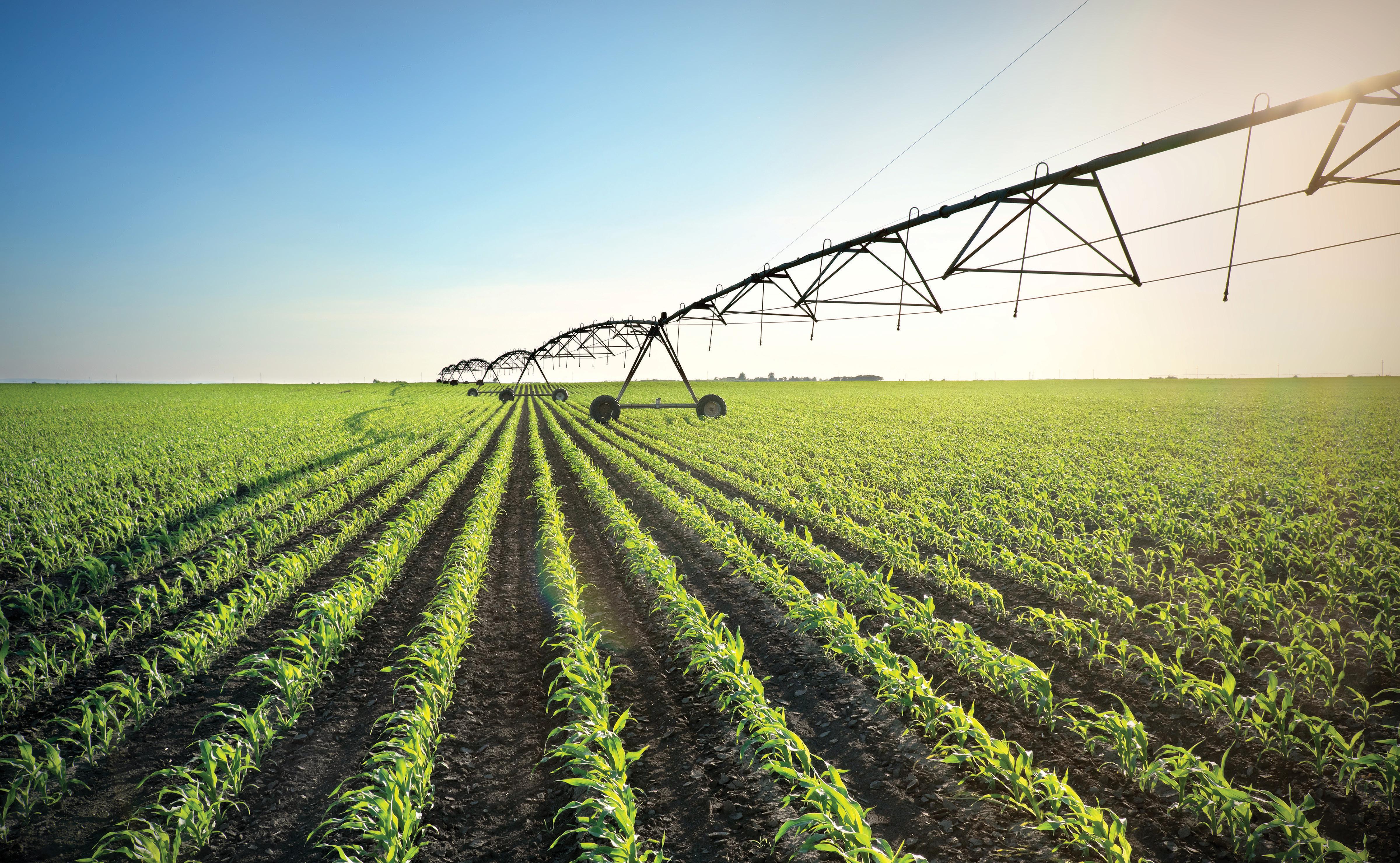





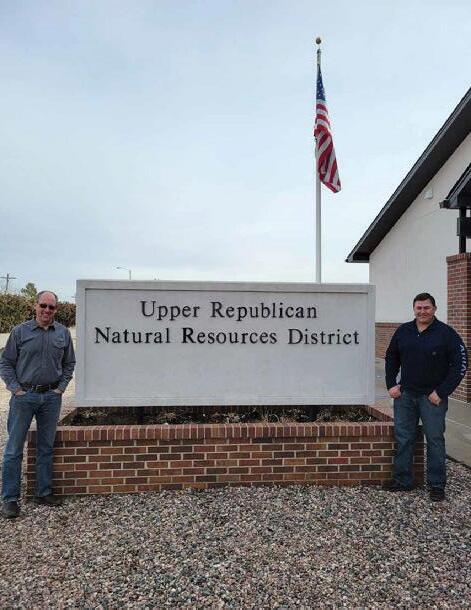









The irrigation industry is crucial to sustainable agriculture and efficient water management. The IrrigationNZ Code of Practice and Design Standards represent a cornerstone in elevating the standards within the industry. However, the pursuit of professional standards remains essential. Applying these standards yields long-term benefits for farmers and growers, enhances job satisfaction for companies and individuals, and supports regulatory processes by ensuring the responsible use of freshwater resources.
We caught up with Ian McIndoe, a seasoned expert in the irrigation industry, to get his insights on the significant impact of a Code of Practice in irrigation, and its future direction.
Can you provide an overview of your background and your involvement in the irrigation industry?
I was raised on a dairy farm in Seddonville on the West Coast, where drainage, not irrigation, was the challenge. I studied irrigation engineering as part of my degree, but only really became interested in irrigation when, after graduating, I joined the water supply division of Bisley Industries in Christchurch. That gave me an introduction to well drilling, pumping, and irrigation (end-tow, side roll, hard-hose guns, and centre-pivots). Following this, Bisley Industries sent me to Saudi Arabia to help build dairy farms in the desert. That got me heavily involved in centrepivots, fixed grid systems, drip irrigation, and associated infrastructure, including line shaft pumps.
Irrigation Manual were outputs from the work.
We realised that irrigation didn’t have a national voice and needed one, so in 1999 a group of seven of us involved in the irrigation industry decided to revive the New Zealand Irrigation Association, as it had gone into recess in the 1980s. It changed its name to IrrigationNZ in the early 2000s. I served on the Board for 16 years and still have a lot of involvement with the organisation, such as helping with training irrigation designers.

What initially motivated the development of the IrrigationNZ Code of Practice (COP) and Design Standards?
One of IrrigationNZ’s aims was to improve irrigation standards. With access to water becoming more competitive and the environmental effects of irrigation being negatively portrayed (some was justified, some wasn’t), we knew we had to raise the bar and at the same time educate the public about irrigation.
In the early days, irrigation was treated more like drought insurance where the focus was on spreading water quite thinly to strategically support crops. That changed in the 1990s where irrigation became a necessary part of farming with the goal of maximising production, especially in pastoral systems. This resulted in systems being designed to apply sufficient water to achieve that production regardless of the efficiency of the system. While many systems were well-designed, there were a lot that weren’t, and that had to be addressed.
I returned to New Zealand after four years and joined the Ministry of Agriculture and Forestry (MAF) as an engineering advisor. I was heavily involved in many aspects of irrigation – border dyke in WaiauBalmoral, drip and micro in Kerikeri and Waimea East, and pressurised irrigation for many farmers around New Zealand, including doing most of the design work for Applefields. I also got involved in water allocation for irrigation and presented evidence at several plan hearings around the country.
In the mid 1980s I was part of the original team that developed the Irricad irrigation design program. Today, the software is the most widely used irrigation design package around the world.
How did you become involved with IrrigationNZ?
In the 1990s my colleagues and I were concerned that there was little work going into improving the performance and efficiency of irrigation, despite the irrigation industry receiving increasing criticism from the press for inefficient water use. Getting water allocated for irrigation was becoming more and more difficult and we didn’t have the backup to support our case. As a result, MAF funded several irrigation projects to help raise the standards in the industry and to provide some documented evidence for those improvements. The Irrigation Guide and the
In the mid-2000s, we set up a committee of industry people to write a new Code of Practice and Design Standards for NZ conditions. It was a challenging job, with a lot of consultation required, which resulted in a document that became the basis for irrigation design in New Zealand. It was revised in 2013.
Could you share some examples of how these standards have positively impacted the industry?
The COP and Design Standards address irrigation performance in six areas – water use efficiency, production (effectiveness), energy use, cost (whole of life), environmental effects, and labour. These are interrelated, but the biggest focus for improvements have been in water use efficiency and reducing environmental effects.
An example of the improvements achieved by adopting the Standards is related to the length of centre-pivots. Very long pivots in the wrong conditions result in production losses, low water use efficiency, surface runoff and/or drainage through the soil profile, and higher energy costs, but have significantly lower capital cost. Designing to the Standards required reducing pivot length to achieve better production and lower environmental effects. I am pleased to see that the irrigation industry has adopted this practice.
Despite having a robust Code of Practice and Design Standards, do you believe there is still a need to pursue professional standards?
While the COP and Design Standards have become the reference documents for irrigation and are widely supported by the irrigation industry and other organisations involved in irrigation in New Zealand, their adoption is voluntary. Some regional councils, as part of consent conditions, require irrigation systems to be designed to the Code and Standards, but it is essentially the responsibility of the irrigation designers and suppliers to achieve the standards. Professional standards help to guarantee that the industry is accountable for its actions, and for maintaining consistency throughout New Zealand. While significant improvement has been achieved, I still hear of some disaster stories resulting partly from not designing to the standards.
… be curious. Be aware of the bigger picture around water use, and think and learn about solutions that enhance water use efficiency. Never stop learning. While tried and tested is safe, there may be better ways of achieving outcomes to the benefit of all.
with other countries such as Australia and the US, is typically used by other professions, will be easier to administer, and is better recognised and understood.
Irrigation companies can advertise that they have certified designers, which will provide more confidence to end users that the system will be designed professionally.
How do you see professional certification supporting the regulatory process in managing freshwater resources?
Can you share some success stories where adhering to professional standards led to positive outcomes?
It is important to realise that good design sets the platform for efficient water use. There are three areas where I have seen significant improvements. The first is in soil-water-plant relationships. Previously, many industry participants had limited knowledge of this despite it being critical to achieving desired performance and production outcomes. Much more consideration is now being given to soil infiltration rates, profiling available water, and designing systems to optimise application depths and return intervals. This not only improves production, but reduces environmental effects by minimising the potential for drainage losses.
The second is in system cost. Traditionally, farmers have made decisions on up-front capital costs, and some still do, but the cheapest is not always the best. Many irrigation industry professionals are now presenting both capital and operating costs with their options, allowing more informed whole-of-life decisions to be made.
The third is energy efficiency, where I see better matching of pump and motor configurations to system duty requirements. While I know that some industry people see technology like Variable Speed Drives (VSDs) being a solution to all problems, there is a growing awareness of the need to take more of a systems approach to design and configure systems to reduce energy use.
The IrrigationNZ Accreditation Board is considering shifting from company accreditation to individual professional practice certification, similar to Irrigation Australia. What are your thoughts on this change?
Water users and managers rarely specify that irrigation systems be designed by accredited companies. My view is that individual practice certification will be well accepted by the industry. It is consistent
Regulatory water managers such as regional councils, and other water users such as district councils, large organisations, and corporates often require irrigation systems to be designed by suitably qualified experts, because they want a system in which they can have confidence. They also want to help to ensure water is not wasted and that environmental effects are minimised.
I think that professional certification will enable a water manager or user to quickly establish whether a suitably qualified expert has completed the job. I also think that this will encourage those that are not certified to become certified. Becoming certified should not be easy. It must be set so that individuals who reach the standard have the necessary training and experience to deliver professional outcomes.
What advice would you give to irrigation professionals who aim to enhance their practices and adhere to high standards?
Firstly, abide by the COP. An important aspect of the Code is that if you, for some reason, don’t design to the Code or Standards, the client is fully informed about it and its consequences.
Secondly, complete the NZ Certificate in Irrigation System Design if you haven’t already. That will give you status credibility and equip you to reach professional standards.
Thirdly, be curious. Be aware of the bigger picture around water use, and think and learn about solutions that enhance water use efficiency. Never stop learning. While tried and tested is safe, there may be better ways of achieving outcomes to the benefit of all.
Finally, be a professional, do your homework, and sell to your clients the benefits of a professional design in the six areas related to irrigation performance.
Interested in completing the NZ Certificate in Irrigation System Design? Go to www.irrigationnz.co.nz for more information.

Stephen McNally Principal Technical Advisor IrrigationNZ
In the New Zealand landscape agriculture is a cornerstone of the economy, and freshwater resources play a vital role in sustaining both livelihoods and ecosystems. However, the challenges facing our freshwater systems are becoming increasingly apparent; from intensifying climate change impacts to competing demands for freshwater from various sectors. The need for a comprehensive National Freshwater Strategy has never been more pressing.
Let’s contemplate what a National Freshwater Strategy might look like. At its core lies the concept of integrated water management. Gone are the days of viewing water as a standalone resource; instead, we must adopt a more encompassing approach that considers the interconnectedness of ecosystem, community, and economic stability and resilience. This must be done with genuine balance in mind. By doing so, we can address the diverse needs of agriculture, urban communities, energy
production, and environmental conservation.
One of the key pillars of a strategy would be the investment in large-scale water storage projects. These projects not only improve water availability and security nationally and regionally for farmers, but also benefit local communities, urban areas, and hydro energy production. By strategically placing dams, reservoirs, and aquifer recharge systems we can move towards ensuring a reliable water supply even in the face of changing climate patterns.
Climate change is no longer a distant threat but a stark reality that we must incorporate in our policies and actions. A National Freshwater Strategy could prioritise adaptation measures to mitigate the impacts of climate change on our freshwater resources. By investing in resilient infrastructure in synergy with nature-based solutions – a grey and green approach – we can enhance the ability of our water systems and communities to withstand extreme weather events and
shifting precipitation patterns.
Meaningful engagement with stakeholders is essential for the success of a strategy. All sections of society, including farmers and growers, the food supply chain, regulators, banks, rural professionals, and Māori agricultural landowners play a crucial role in decisions on freshwater resources. Within a national strategic approach, fostering local collaboration will enable communities to be self-determining without undue influence from those who aren’t directly affected.
Education and capacity building are fundamental to empowering our communities to adapt to the challenges of freshwater management. This can be achieved by having a clear national strategic approach to investing in training initiatives and knowledge-sharing platforms. We can equip farmers and growers with the tools and resources they need to implement long-term, efficient, and effective water management practices on their farms.

The Fast-track Approvals Bill has emerged as a crucial point of discussion, promising to streamline infrastructure projects essential for the future of our farming communities.
In our comprehensive written submission, which is available on our website, IrrigationNZ extends both support and concern regarding the Fast-track Approvals Bill. While we commend its objective of expediting infrastructure project approvals, we’re deeply concerned about the underlying issues driving the need for such legislation.
Central to our concerns is the inadequacy of the Resource Management Act (RMA) in meeting the evolving needs of our society. While the RMA has been amended and tweaked across its lifetime, its current form achieves little regarding natural resource management for society, and focuses more on prioritising environmental protection at all costs. Many commentators, even within environmental groups, agree that its complex processes and outdated planning documents have created bottlenecks in decision-making on crucial infrastructure projects, including those vital for our economic stability and communities’ well-being.
One area significantly affected by these challenges is water storage and distribution initiatives. Litigious interference and a lack of strategic planning have hindered progress, posing threats not only to community well-being but also to our food-based export economy.
Our submission emphasises the urgent need for a nationally determined strategic
One area significantly affected by these challenges is water storage and distribution initiatives. Litigious interference and a lack of strategic
planning have hindered progress, posing threats not only to community well-being but also to our food-based export economy.
approach to freshwater management and its related infrastructure, both for rural and urban communities and their activities that rely on reliable water supply. While environmental preservation is a key element of decision-making for our future, achieving a balance between sustainability and economic prosperity is an immediate imperative. The current freshwater policy approach lacks this equilibrium, as evidenced by the restructuring of Te Mana o te Wai into a hierarchy or set of stage gates in decision-making; it effectively sets the natural health of water above all other considerations, preventing moving society forward within a balanced approach.
There’s a growing disconnect between our communities and the source of their food. Despite a focus on freshwater allocation, the reality is that nearly 96 percent of our national freshwater resource flows naturally to the coast or into aquifers, yet our agricultural systems face daily challenges due to climatic variables and water availability uncertainties. Addressing these challenges requires a comprehensive planning framework balancing water infrastructure development with freshwater catchment management.
The Fast-track Approvals Bill presents an opportunity to address the shortcomings of our current planning framework and enable well-considered water storage and
distribution infrastructure. However, we urge caution in the decision-making process. Collaborative decision-making involving affected communities and Māori landowners is essential for project success.
Well-informed and effective leadership must prioritise critical water infrastructure projects within the financial constraints of short-term capital demands and intergenerational economic stability. This necessitates an orderly approach to early decision-making followed by comprehensive project management expertise and construction capacity to prevent unintended competition. While the Fast-track Bill may unstick the blockages that have prevented societal progress, we must not trip over ourselves due to a lack of capacity by trying to do everything at once.
Although the Fast-track Approvals Bill is a step in the right direction, it’s just one piece of the puzzle. Achieving a long-term strategic approach to water management in New Zealand requires concerted efforts from the Government, stakeholders, and farming communities. IrrigationNZ remains committed to this vision, hoping that the second reading of the Fast-track Approvals Bill marks a significant milestone in our journey towards sustainable water management and unlocking New Zealand’s agricultural potential.


Irrigation plays a crucial role in approximately 900,000 hectares of agricultural and horticultural operations across New Zealand, so ensuring optimal water supply to crops is critical for farmers and growers. In most cases, the water you access is subject to a consent and the related conditions on efficient use. While a few takes are under permitted activity status, these operations should not overlook the gains to be made from running the system well. To ensure efficient water usage and system performance, irrigation systems need to be regularly assessed and calibrated. The New Zealand Piped Irrigation System Performance Assessment Code of Practice provides guidelines and standards for measuring and benchmarking irrigation performance.
Calibration and full assessment are two approaches to evaluating irrigation system performance. Calibration involves collecting just a minimum amount of information and determining only some of the potential performance indicators. This helps identify if there are any problems with the system. While this light touch has some benefits, this process doesn’t tell you too much about the irrigator overall and its water supply. On the other hand, a full assessment is a comprehensive evaluation that includes visual inspections, pump and filter performance assessment, as well as the key performance indicators (KPIs) of depth, rate, and uniformity of application. It’s a comprehensive tool to support good decision-making on water scheduling and overall seasonal irrigation efficiency.
Before conducting an assessment, proper planning is essential. A professional performance assessor, ideally holding the New Zea-
land Certificate in Irrigation System Performance Assessment, will approach the farmer well before the test day and ideally well before the need of a farm audit visit! It is beneficial for the assessor to fully involve the system operator in the assessment process. Agreements should be made regarding the date, time, and meeting place for the assessment. The availability of required staff, completion of system maintenance, and access to the irrigation system should also be ensured. Additionally, the test methodology to be used should be established early so everyone is wellinformed about what is about to be done.
Various equipment is necessary for conducting an irrigation performance assessment. This includes getting set up with the data collection sheets, a camera, a stopwatch, ideally wind speed meters, and various tools to allow pressure and flow readings to be taken on the irrigation system. You can never have too many pressure readings to tell you how a system is performing, so having reliable gauges, pressure test needles, and pitot tubes is also required for measuring system performance.
We haven’t even mentioned buckets yet! There’s a reason for me focusing on a performance assessment being more than just the bucket test steps. While that data directly measures the water falling on the ground, informing you of the distribution uniformity, depth of application, and rate of application, it won’t particularly tell you about the system efficiency or how it stacks up against the KPIs the system had when it was new.
During both the calibration and full assessment methods, water application data is collected using a set of uniform containers. The collected data is best supplemented by lots of observations, notes, and test measurements taken around the irrigation system.
Having the original commissioning report is hugely beneficial to tell the assessor how the irrigation system was originally set up and what they should expect at each of the test points.
The collected data is then analysed and reported. Graphs of collector volumes, instantaneous application intensity, and soil infiltration rates are presented. The distribution uniformity is determined and compared to expectations for the type of system. Observations, recommendations, and conditions under which the test was conducted are also included in the report.
The New Zealand Piped Irrigation System Performance Assessment Code of Practice covers different types of irrigation systems, including micro irrigation, solid-set irrigation, sprayline irrigation, travelling irrigators, linear move irrigators, and centre pivot irrigators. Each part of the assessment focuses on specific processes for measuring system performance. Additionally, there are assessments for energy efficiency and seasonal irrigation efficiency.
Regular assessment and calibration of irrigation systems are essential for ensuring optimal performance and efficient water usage. By following the process outlined in the code of practice, farmers and auditors can identify any issues with the system and suggest any necessary adjustments to improve performance. This ultimately leads to better resource use efficiency and sustainable agricultural practices.
Code of Practice resources can be found on the IrrigationNZ website, along with information on the New Zealand Certificate in Irrigation System Performance Assessment training. Visit www.irrigationnz.co.nz
Variable Rate Irrigation (VRI) systems offer precise control over water application, optimising crop yield and water use efficiency. However, assessing VRI irrigators requires specialised knowledge to ensure accurate results. We emphasise the need for qualified personnel with the NZ Certificate of Irrigation System Performance Assessment to conduct performance assessments for VRI systems, following the New Zealand Irrigation System Performance Assessment Code of Practice.
Assessments should be conducted with the VRI function activated, using an appropriate application plan. Assessors should not change any panel settings without appropriate supervision and must understand the system’s design and commissioning report. Having the input of the farmer or farm manager is essential for obtaining accurate results.
Performance assessors must determine optimal bucket placement based on the VRI control system settings and to conform to the Code of Practice. An appropriately conducted assessment will account for the system’s design, such as where oversized nozzles have been adopted for achieving uniform distribution under varying flow situations. Ignoring these nuances can lead to inaccurate evaluations and unnecessary confusion for the operator and the regulatory audit. All performance assessments must be accompanied by a fully-detailed report that explains the test scenario, ensures any anomalies are accounted for, and makes other system performance observations clear.
IrrigationNZ has engaged several participants for a targeted consultation undertaken by the Ministry for the Environment (MfE) on reshaping the implementation approach for Freshwater Farm Plan (FW-FP) regulations. Our goal is to align the FW-FP regulations with existing freshwater farm environment plans, nutrient management programmes, and other local scheme initiatives and accurately identify freshwater risks across different agricultural landscapes.
Our submission has benefited from invaluable input from environmental advisors, scheme managers, and a range of farming and industry stakeholders. Through
this collaborative effort, we hope to ensure that the FW-FP regulations are practical, effective, and supportive of the agricultural community’s efforts to manage freshwater resources sustainably.
We expect further consultation on the proposals in June, with MfE aiming to develop a revised regulatory framework by September. This framework will provide a clear and cohesive approach to managing freshwater resources on farms, ensuring that farmers have the guidance and support they need to meet the new regulations.
IrrigationNZ made a submission on the coalition Government’s initiative to revitalise the research, science, and innovation (RSI) sector through the Science System Advisory Group (SSAG) within the Ministry of Business, Innovation and Employment (MBIE).
We emphasised the need for better base funding to enhance stability and research outcomes in the agricultural sector.
Our submission also advocated for increased private sector access to public research grants to foster agricultural innovation and development. By encouraging collaboration between public and private sectors we can drive innovation and address the challenges facing our agricultural systems.
We also called for improved funding metrics on better communication of scientific research outcomes to ensure that the findings are accessible and actionable for farmers and growers. Enhanced science communication will enable the agricultural community to adopt new technologies and practices that can improve water management and overall farm sustainability.
Our November 2023 submission on amendments to the National Policy Statement for Highly Productive Land (NPS-HPL) has been considered. The amendments address key areas such as infrastructure, intensive indoor primary production, and greenhouses on highly productive land.
Key themes of our submission included concerns about the loss of HPL to nonland-based activities, the need for consistent application of the NPS-HPL across regions,
support for the transition to renewable energy sources, and increased flexibility in primary production practices.
By addressing these issues we aim to protect New Zealand’s highly productive land for future generations while ensuring that farmers have the flexibility and support they need to adapt to changing conditions and market demands.
We have received an update on our submission to last year’s Environment Committee inquiry into climate adaptation, which is now being considered by the Finance and Expenditure Committee. We have been invited to provide a supplementary submission to further elaborate on our initial points.
Our previous submission highlighted the need to take a cautious approach to any consideration of relocation of communities. These activities must be strategically planned to address insurmountable risks posed by climate change, such as sea-level rise and increased frequency of extreme weather events. We called for a broader vision of planned relocation to be adopted which takes into account where those future communities and land-based activities will operate with certainty, rather than just taking a short term view of retreat. A strategic approach to longterm land use strategies would include water resource availability and resilience in our food production supply chain for rural communities most likely affected by climate change.
In our next submission we will focus on the importance of development of water capture and storage infrastructure in building a broad-spectrum community resilience to the impacts of climate change. By investing in robust water infrastructure, we can enhance the resilience of our agricultural systems and ensure a reliable water supply for future communities.
This updated e learning programme offers the flexibility of remote study, and supplies course material that is current and relevant to industry standards.
Online training provides significant advantages.
• Learn at your own pace: Access the course material whenever it suits you, allowing you to balance your studies with work and personal commitments.
• Save time and money: Eliminate the need for travel and accommodation expenses associated with traditional inperson training.
• Access updated content: Stay up to date with the latest advancements in irrigation scheduling, ensuring your knowledge is current and comprehensive.
Our e learning programme covers a range of essential topics.
• Crop and climate: Understanding the relationship between crop requirements and climate conditions.
• Understanding soils: Learning about soil types and their impact on irrigation efficiency.
• System type and efficiency: Exploring different irrigation systems and their performance.
• Deciding when to irrigate: Making informed decisions about irrigation scheduling based on various factors.
This online training fulfils your Farm Environment Plan (FEP) audit requirements. Upon completion you will be issued a Certificate of Achievement, recognising your expertise and commitment to best practices in irrigation scheduling.
Through our e learning platform, IrrigationNZ can significantly reduce the cost of training to $50+GST for members and $150+GST for non members. This cost effective solution makes it easier for everyone to access high quality training.
If you are a shareholder of an irrigation scheme or part of an irrigator user group that is a current IrrigationNZ member, you can also enjoy the discounted rate of $50+GST. This membership can simplify your login process and provide easier access to resources and training.
To confirm your membership status or to become a new member, please call us at 04 595 6848.
Registering for the Irrigation Scheduling training is simple.
1. Register and pay: Complete the registration process and make the payment.
2. Receive confirmation: You will receive an email confirmation with a link to our e learning platform.
3. Begin training: Start the training at your convenience and complete it within 30 days.
or visit www.irrigationnz.co.nz/scheduling

The training videos have been recently updated to enhance your remote learning experience.

The Building Dam Safety Regulations 2022 came into force on 13 May 2024.
The regulations have been made to increase the resilience and safety of Aotearoa New Zealand’s dams, thereby protecting people, property, and the environment from the potential impacts of dam failures.
Only classifiable dams are impacted by the regulations. Dams are classifiable if they are a height of four metres or more, and store 20,000 or more cubic metres of water or other fluid.
Canals are also classifiable if they are more than four metres deep and contain 20,000 or more cubic metres of water.
The regulations were made by the Government in May 2022 and provide a nationally consistent approach to dam safety. Having a dam safety framework brings Aotearoa/New Zealand in line with most other countries in the Organisation for Economic Co-operation and Development (OECD).
Since May 2022, the Ministry of Business, Innovation and Employment (MBIE) has been working with industry groups and regional authorities to ensure dam owners are aware of the regulations, and provide them with information and resources to support them to meet their responsibilities when the regulations came into effect.
The Government has amended the classifiable dam threshold to reduce compliance costs for owners of smaller dams
The Government has recently made a change to the thresholds to reduce the number of dams that need to be classified. This follows concerns from the sector that a higher number of small, low impact dams were captured by the regulations than what was originally intended. There were also concerns that associated costs were not proportionate to the potential risks these dams pose.
MBIE estimates that 1,100 dams will now be captured by the regulations. This is a reduction from the 3,000 dams that would have been captured under the previous thresholds.
These changes free up specialist engineering resources so they can be focused on the dams that represent the greatest risk to people and property downstream, and the owners of classifiable dams can efficiently meet their obligations under the regulations.
If you are the owner of a water retention structure, firstly you need to determine if your structure meets the definition of a classifiable dam –that is, if it meets the height and volume thresholds.
• If you determine that your dam is classifiable, you will then need to determine your dam’s potential impact classification (PIC). If you do not have a classifiable dam, no further action is required under these regulations.
• Once the PIC has been determined, you will need to then have the PIC audited and certified by a Recognised Engineer.
• Dam classification certificates need to be submitted to the relevant regional authority by 13 August 2024.
• Owners of dams with a medium or high PIC have further actions they need to take.
• The only additional requirement for owners of dams with a low PIC is to review their dam’s PIC within every five years of the regional authority approving it.
You can read more about the definitions and regulations, and find resources to support you, on MBIE’s Building Performance website: www. building.govt.nz/managing-buildings/dam-safety
Included in these resources is the Measuring and calculating the height and volume of agricultural dams resource. This is designed to help agricultural dam owners calculate the volume of their dam and understand if they are impacted by the Regulations.
MBIE has also recently published another resource, the Potential Impact Classification checklist, which is a checklist to support dam owners to identify and collate information for a PIC assessment.
MBIE would like to acknowledge the contribution of IrrigationNZ and other industry professionals who have helped with the development of these resources.
Designing or upgrading your irrigation or effluent system?
Using an accredited company means your irrigation infrastructure and practice will be efficient, targeted and sustainable.
With more emphasis on irrigation efficiency than ever before, choosing an accredited Irrigation Design company is an easy way to ensure that the irrigation system you install today meets both regulatory and industry performance benchmarks. Accredited Irrigation Design companies have industry trained professionals and excellent product knowledge to ensure that every drop counts.
Dairy farm effluent was once considered a waste product, now a reliable source of nutrient that enables dairy farmers to reduce their overall nutrient costs. Farm Dairy Effluent Design accredited companies have the expertise to design and build a dairy effluent system that meets the expectations of regional rules throughout New Zealand.
Councils are aiming for national consistency in water metering, measurement and the reporting of water use data. Engaging ‘blue tick’ accredited companies will help ensure work is in line with manufacturers’ specifications, meets industry best practice, and ensures accuracy in the reporting of data back to councils for future decision making.
in irrigation design, and product service and delivery.
Rural professionals may soon have an accredited industry standard to work towards, assuring farmers and fellow professionals they meet an industry standard for advice and knowledge.
The New Zealand Institute of Primary Industry Management (NZIPIM) has just completed a roadshow seeking feedback from members about what sort of programme could best meet industry needs and farmer expectations, and what the programme should cover.
NZIPIM CEO Jo Finer said the proposal will see rural professionals have a body with similar stature to the Law Society for lawyers, or the Engineering NZ body for engineers.
She said interest has been greater than initially expected, with a broad range of highcalibre and senior industry people expressing support for the scheme.
“It is not so much that we have a problem now, but this is an effort to raise the kudos and status of professionals who support the primary sector. It allows them to sit alongside the likes of engineers and accountants.”
Usually, such bodies include a complaints process and disciplinary procedures, but Finer said NZIPIM already has a complaints process in place.
“It is just that most do not know that it is
there, and that we have professional standards for them to base a complaint upon.”
She said the institute has enjoyed a positive informal response from the Government, which is keen not to foist more regulations on the primary sector.
“There’s been strong support for the proposed programme, with everyone broadly agreeing that there’s value in developing an integrated programme to accredit primary industry professionals, to support, develop, and deliver the future of farming.”
She acknowledged farm professionals are working in a complex environment today. Bankers, for example, are required to understand their clients’ environmental standards and emissions levels.
“Having someone sign up to a standard that agrees on an integrated approach is valuable. Farm consultants used to be generalists, now they need services of various experts, and having an accreditation provides assurance about the quality of the advice being engaged.”
She said the Master Builders voluntary accreditation programme is a good template for the type of programme on to which rural professionals may sign on.
Finer said the next step is to prepare a full
business case for board sign-off.
She fully expects it will take several years to develop, and is encouraged by the wide cross-sector support the proposal has received so far.
This new initiative from NZIPIM complements our efforts by contemplating the options for a nationally consistent framework for certification across a wide range of rural professionals. We consider this crucial for fostering trust and consistency in the primary sector. IrrigationNZ agrees that by working towards industry standards for professionals in their particular skill areas we can continue to elevate the professionalism and credibility of those supporting farmers. This ensures they are wellprepared to navigate the complexities of modern agriculture.
In the meantime, IrrigationNZ will strive for continual improvement and excellence within the irrigation industry by advancing our plans for establishing a specific set of certifications in aspects of design and installation, performance assessment, and soil moisture services.


El Niño, which was active since September 2023, has ended and given way to ENSO neutral conditions, which are expected to last through winter. A La Niña Watch has been issued with a 60–70 percent chance of La Niña developing during spring.
Winter air pressure is expected to be higher than normal near New Zealand, particularly the North Island, and lower than normal south of the country. This will most likely come with more westerly winds than normal. Southerly winds are expected to occur less frequently in winter than they did during autumn, which will have an influence on temperature patterns.
Winter temperatures are about equally likely to be near average or above average across the country. A spell of warmer than average temperatures is expected during the first half of June followed by a return to more typical conditions in the second half of the month. Cold snaps, while expected occasionally through the season, will likely be brief.
Winter rainfall is about equally likely to be near normal or above normal in the west of the South Island and about equally likely to be near normal or below normal in all other regions. Because of the prevalence of high pressure, rainfall events will likely occur irregularly. There is a chance for a heavy rainfall event in the North Island and northern South Island during the second week of June. In association with a stronger than normal pressure gradient (difference in air pressure over distance), winds are expected to be stronger than normal, particularly in the South Island. Coastal sea surface temperatures (SSTs) ranged from 0.23˚C to 0.50˚C below average during May.
Soil moisture levels are most likely to be below normal in the north and east of the South Island, near normal in the west of both islands, and equally likely to be near normal or below normal in the north and east of the North Island. River flows are most likely to be below normal in the north of both islands and the east of the South Island, near normal in the west of the North Island, equally likely to be near normal or below normal in the east of the North Island, and about equally likely to be near normal or above normal in the west of the South Island. Soil moisture and river flow deficits, such as in the lower North Island and South Island, will continue to be slow to be alleviated.
Northland, Auckland, Waikato, Bay of Plenty
• Temperatures are about equally likely to be above average (45 percent chance) or near average (40 percent chance).
• An increased prevalence of highpressure systems will likely cause cool, occasionally frosty mornings but warmer afternoons, particularly from the second half of June.
• Rainfall totals are about equally likely to be below normal (40 percent chance) or near normal (35 percent chance). June has an elevated chance of being drier than normal and rainfall events will likely occur irregularly through the season.
• Soil moisture levels are equally likely to be near normal or below normal while river flows are most likely to be below normal.
Central North Island, Taranaki, Whanganui, Manawatu, Wellington
• Temperatures are about equally likely to be above average (45 percent chance) or near average (40 percent chance).
• An increased prevalence of high pressure systems will likely cause cool, occasionally frosty mornings but warmer afternoons, particularly from the second half of June.
• Rainfall totals are about equally likely to be near normal (40 percent chance) or below normal (35 percent chance). June has an elevated chance of being drier than normal.
• Soil moisture levels and river flows are most likely to be near normal (50 percent chance). Soil moisture and river flow deficits will be slow to be alleviated.
Gisborne, Hawke’s Bay, Wairarapa
• Temperatures are about equally likely to be above average (45 percent chance) or near average (40 percent chance). Westerly quarter winds will likely cause spells of milder temperatures.
• An increased prevalence of high pressure systems will likely cause cool, occasionally frosty mornings but warmer afternoons, particularly from the second half of June.
• Rainfall totals are about equally likely to be below normal (40 percent chance) or near normal (35 percent chance). Westerly quarter winds will likely result in spells of drier than normal conditions, particularly from the second half of June.
• Soil moisture levels and river flows are equally likely to be near normal or below normal (45 percent chance each).
Tasman, Nelson, Marlborough, Buller
• Temperatures are about equally likely to be above average (45 percent chance) or near average (40 percent chance).
• Rainfall totals are about equally likely to be near normal (40 percent chance) or below normal (35 percent chance). June has an elevated chance of being drier than normal.
• Soil moisture levels and river flows are most likely to be below normal (50 percent chance). Soil moisture and river flow deficits will be slow to be alleviated.
West Coast, Alps and foothills, inland Otago, Southland
• Temperatures are about equally likely to be above average (45 percent chance) or near average (40 percent chance).
• Rainfall totals are about equally likely to be near normal (40 percent chance) or above normal (35 percent chance). The region may be exposed to strong fronts and lows on occasion, particularly in July and/or August.
• Soil moisture levels are most likely to be near normal (50 percent chance) while river flows are about equally likely to be near normal (40 percent chance) or above normal (35 percent chance).
Coastal Canterbury and the nearby plains, east Otago
• Temperatures are about equally likely to be above average (45 percent chance) or near average (40 percent chance). Westerly quarter winds will likely cause spells of milder temperatures.
• Rainfall totals are about equally likely to be near normal (40 percent chance) or below normal (35 percent chance). June has an elevated chance of being drier than normal.
• Soil moisture levels and river flows are most likely to be below normal (50 percent chance). Soil moisture and river flow deficits will be slow to be alleviated.
Probabilities are assigned in three categories: above average, near average, and below average. In the absence of any forecast guidance there would be an equal likelihood (33% chance) of the outcome for any of the three categories. Forecast information from local and global guidance models is used to indicate the deviation from equal chance that is expected for the coming threemonth period.
This is an extract of the Seasonal Climate Outlook published by NIWA.
There are many types of irrigation systems used across New Zealand to apply water. Their efficiency is continually improving thanks to technology and education.
IRRIGATION IN NZ BY SYSTEM TYPE 2019
*IrrigationNZ submitted to Stats NZ in July 2022 that the Agricultural Production Survey questions would not show the advancement into solid set/fixed grid as it was clumped with other quite antiquated systems. Stats NZ agreed in August 2022 to have surveys from 2027 onwards better show technological advances.
PIVOTS/ LINEAR MOVE CENTRE PIVOTS








The Zimmatic Trailblazer Sustainable Irrigation Awards acknowledge the world-class leadership by New Zealand farmers in regards to irrigation management. They offer a chance to celebrate sustainable irrigation management, waterway protection and environmental stewardship.
Awesome prize packs up for grabs for all winners including international irrigation study tour travel vouchers.
Consider entering or nominating someone who embodies sustainable irrigation today.



